Traditional Chinese Lion Dance and Its Styles Essay
Introduction, music, instruments, and costumes, historical symbolism, evolution of the lion dance, works cited.
Lion Dance is a form of Chinese traditional dance that was created more than ten centuries ago ( Chinese New Year Lion Dance par1). It involves the mimicry of a lion’s movements while adorning a lion costume and it is practiced in China and other Asian countries that share similar traditional practices and customs. The dance is usually performed during certain special occasions such as New Year festivals and other big occasions of critical importance such as cultural and religious festivals. It is also performed during events such as weddings and honoring of guests. The lion dance is usually performed using drums and gong instruments that act as accompaniments. In Chinese culture, the lion brings good luck, and therefore festivals that included the dance aim to bring good luck and scare away evil (Vasu par2).
The dance originated in China more than a thousand years ago. In traditional Chinese culture, the lion was a mythical animal because lions were non-existent in the country ( History of the Lion Dance par3). Lions were sent to Chinese emperors by traders to be allowed to conduct business in their territories. Only a few lions had been seen in ancient China before the emergence of the Han Dynasty. Later on, more lions emerge and because they were mythical in China, people were mesmerized by them and began to mimic their behavior and appearance during performances. These performances mimicking the actions of lions led to the creation of the lion dance in the Han Dynasty ( History of the Lion Dance par4).
The Lion Dance became more popular with the spread of Buddhism in the Northern and Southern Dynasties and got to its peak during the Tang Dynasty. The rising popularity of the dance led to its embracement in Japan. In Japan, the dance was used in courts as a form of entertainment while in China it was used during celebrations. The dance later spread to Korea and Taiwan where it evolved into different styles but adopted similar symbolism ( History of the Lion Dance par5).
There are two main styles of the Lion Dance namely the Southern Lion style and the Northern Lion style ( Chinese New Year Lion Dance par3). These styles emerged as the dance evolved through the years and as it spread to other dynasties around China. Other styles emerged as the dance spread to other Asian countries.

The Northern Lion style
This style closely resembles martial arts and has two variations in which a young lion is mimicked by a young person and an adult lion is mimicked by two people (Green 42). Both performers wear costumes that resemble a lion. For instance, their lower bodies are adorned with trousers that resemble the color of the lion’s body. Their shoes are colored yellow and are resemble a lion’s claws. In the dance that the performers mimic an adult lion, one performer stands in the front and the other one behind the first performer with a bent waist to make movements easy. The first performer adorns the head of the lion and the other moves the body of the lion (Vasu par7).
The performers then mimic several movements that are common among lions such as jumping, climbing, rolling, and wrestling (Green 42). The Northern Lion Dance is more versatile than the southern lion dance and incorporates additional stunts such as lifts and balancing on elevated platforms. In other dances, Northern Lions can appear as families. In that case, the dance includes two large adult lions and two young lions. To get the resemblance of an adult lion, two performers adorn the costume to appear large (Ma and Cartier 88). In more varied Northern Lion dances, a character representing a warrior stands in front of the lions and leads them through the dance.
The Southern Lion style
This style originated from a region called Guangdong and is performed in pairs (Vasu par8). The performers wear lion costumes and do moves that are more characteristic of the lion as compared to the Northern dance. These actions include scratching, licking fur, and shaking the posterior end of the body (Green 44). The movements make the performance more entertaining and dramatic. The lion can also perform other moves such as playing with a ball. The Southern Lion is associated with a mythical legend known as Nian in Chinese ancient culture. Unlike the Northern Lion, it has a playful temperament.
The social component of the Lion Dance
The Lion Dance was usually performed during social events that were either cultural or religious. In many Asian countries, it is performed during the New Year Festival and other cultural, traditional, and religious festivals such as the performance of rituals (Ma and Cartier 88). Also, it is performed during events to open new businesses, marriage, and honorary ceremonies (Carstens 152). All these events are aimed at bringing people together and allowing them to socialize and celebrate their traditions and customs. In Japan, the dance is performed during Shinto festivals during which people gather to celebrate various religious rituals.
Other styles
After the spread of the Lion Dance to other Asian countries, variations on how it is performed emerged. They include Vietnamese, Korean, Tibetan, Japanese, and Indonesian Lion dances (Carstens 152). The Japanese Lion Dance is used in traditional and religious festivals. The style is highly versatile because it comprises more than 9,000 variations depending on the region. Korean Lion Dance has two main variations that are performed on different occasions that include exorcism drama and masked drama.
Tibetan Lion Dance is performed during important celebrations such as New Year Festival (performed as a secular dance) and religious festivals (ritual dance). The Indonesian Lion Dance is very different from the original dance. However, the symbolism is similar even though it utilizes different forms from those used in China and other Asian countries.
The performance of Lion Dance involves music and the use of different musical instruments. Examples of instruments used during the dance include drums, gongs, and cymbals (Ma and Cartier 88). The drum is the main instrument used and the other two are used as accompaniments. The drum gives the main beat of the dance and movements are synchronized to it (Carstens 153). The drum is also used to emphasize certain movements or actions during the performance.
The main purposes of using cymbals and gongs are to scare away bad luck and make the dance emotional (Carstens 153). The instruments are played in a manner that synchronizes to the movements of the lion to create harmony. The aforementioned variations of the lion dance use different music and play their instruments differently. Each style plays a distinctive beat that is closely associated with people’s customs and traditions.
In contemporary society, the development of electronic instruments has made the lion dance more entertaining and adaptable. For instance, the music can be played from a portable mp3 player. Technological advancement has contributed greatly to the evolution of lion dance because it has eliminated the need to carry heavy musical instruments around while dancing. Costumes are one of the distinctive features of the lion dance. They are usually custom made to resemble a lion with certain colors used to represent various body parts.
The Lion Dance was used during the Three Kingdoms Period to represent the various struggles that the kingdoms went through in the process of fighting for power and uniting the warring regions. The yellow lion with white hair represents calmness, moderation, competence, and wisdom. The red lion with black hair represents skills and wisdom. The black lion with corresponding black hair or white hair represents strength, courage, and character.
The colors used on the costumes represent various life or traditional aspects that are important to Chinese people. Yellow represents Earth, green represents wood, red represents fire, black represents water, and white represents metal (Carstens 156). In many costumes, the lion’s nose is usually green. Green is a representation of good luck, success, and the presence of divine intervention. Also, a mirror is attached to the lion’s forehead to scare away any evil spirit that may be residing among the people or that may be planning to attack the people.
As mentioned earlier, the Lion Dance has evolved greatly since its creation. This evolution is primarily due to its spread to other cultures and the emergence of electronic instruments that have changed how it is performed. The presence of Chinese people in countries around the world has led to vast embracement of the dance and its subsequent evolution. In traditional China, the dance was performed as part of Chinese martial arts culture. It was performed during traditional and religious festivals. Its evolution has led to its adoption in competitions that aim to determine the dance with the best movements or performance. The versatility and agility of the ‘lion” are a core aspect of the strategy used to win in such competitions.
The Lion Dance is an ancient Chinese cultural dance that has evolved since its creation more than a thousand years ago during the Han dynasty. It involves the performance of moves and actions that mimic the behavior of lions while wearing costumes created to appear like lions. The dance is mainly used for social purposes during traditional and religious ceremonies. Its origin dates back to the Three Kingdoms Period during which the lion was only a mythical animal in Chinese folklore.
The first lions were seen in China when merchants presented them to Chinese emperors as gifts to be allowed to trade commodities in their territories. Afterward, people began to mimic their behaviors during performances. In China, it comprises two main styles namely the Southern Lion style and Northern Lion style. The dance has evolved significantly since its creation because of its embracement by other cultures and technological advancements. In contemporary society, the dance is performed in competitions. The drum, cymbals, and gongs are the major instruments used during performances.
Carstens, Sharon. Histories, Cultures, Identities: Studies in Malaysian Chinese Worlds . New York: NUS Press, 2005. Print.
Chinese New Year Lion Dance . 2015. Web.
Green, Martin. People, Places, and Events: journalism by Martin Green . New York: iUniverse, 2011. Print.
History of the Lion Dance . n.d Web.
Ma, Laurence, and Carolyn Cartier. The Chinese Diaspora: Space, Place, Mobility, and Identity . New York: Rowman & Littlefield, 2003. Print.
Vasu, Suchitthra. Lion Dance . n.d. Web.
- Chicago (A-D)
- Chicago (N-B)
IvyPanda. (2024, April 9). Traditional Chinese Lion Dance and Its Styles. https://ivypanda.com/essays/traditional-chinese-lion-dance-and-its-styles/
"Traditional Chinese Lion Dance and Its Styles." IvyPanda , 9 Apr. 2024, ivypanda.com/essays/traditional-chinese-lion-dance-and-its-styles/.
IvyPanda . (2024) 'Traditional Chinese Lion Dance and Its Styles'. 9 April.
IvyPanda . 2024. "Traditional Chinese Lion Dance and Its Styles." April 9, 2024. https://ivypanda.com/essays/traditional-chinese-lion-dance-and-its-styles/.
1. IvyPanda . "Traditional Chinese Lion Dance and Its Styles." April 9, 2024. https://ivypanda.com/essays/traditional-chinese-lion-dance-and-its-styles/.
Bibliography
IvyPanda . "Traditional Chinese Lion Dance and Its Styles." April 9, 2024. https://ivypanda.com/essays/traditional-chinese-lion-dance-and-its-styles/.
- Concepts of the Life of a Lion
- Lions in St. Mark’s Basilica in Venice
- Ecology of Panther a Leo (Lion)
- The Nasrid Palace and the Court of Lions
- "The Lion King" Franchise: Concepts, Themes, and Characters
- Production Analysis of The Lion King
- The Mimic Men Novel by Naipaul
- Secondhand Lions (2003): Storyline and Key Aspects
- “Lions for Lambs” (2007) by Robert Redford
- "The Lion King" by Disney
- The Giselle Ballet at the War Memorial Opera House
- The Royal Ballet Dance in Covent Garden
- Lindy Hop Dance: Development, Events, Figures
- Jazz Dance and Its Techniques
- The Grass Dance Cultural Importance
Chinese Lion Dances: What Is It and What Does It Symbolize?
The lion dance is a traditional Chinese dance performed on big occasions, such as the Spring Festival (Chinese New Year) for good luck, as it is believed that the lion is an auspicious animal.
- Lion Dance Meaning
Lion Dance Costumes
- Lion Dance Styles
- Origin and History of Lion Dances
What Lion Dances Symbolize
In Chinese culture, the lion symbolizes power, wisdom, and superiority . People perform lion dances at Chinese festivals or big occasions to bring good fortune and chase away evil spirits.
The lion dance is one of the most important traditions at Chinese New Year. It is performed to bring prosperity and good luck for the upcoming year. The lion dance is also a way to create a festive atmosphere and bring happiness.
Chinese lion dances are performed by two "dancers" in a lion costume, rather like a pantomime horse . The performers become the body of the lion: the one in front is the head and front limbs, the one behind is the back and hind legs. Performers' legs are dressed the same color as the lion's body, and sometimes the costume extends to shoes the shape and color of the lion's paws.
The lion head is usually over-sized and dragon-like, like many stone lions in China .
Performed in a lion costume, accompanied by the music of beating drums, clashing cymbals, and resounding gongs, lion dances imitate a lion's various movements or demonstrate martial arts agility, depending on the style.
Lion Dance Styles in China
Though lion dances all use similar costumes, during their long development, the lion dances are divided into two styles : southern and northern.
The Southern Lion Dance
The southern lion dance originated in Guangdong, and it is the style popular in Hong Kong, Macau, and the hometowns of overseas Chinese.
The southern lion dance is a performance based on the study of a lion's behavior, with an emphasis on actions like scratching, shaking of the body, and licking of fur.
Performances are vivid and entertaining, even comical. There are also skillful performances, such as playing with a ball, which includes swallowing it.
The best place to see a southern Chinese lion dance is the Hong Kong Chinese New Year Performance Night.
The Northern Lion Dance
The northern lion dance has close relations to kungfu — Chinese martial arts. A young lion is performed by a single person and an adult lion is performed by a duo. Costumes are more robust, and less decorative, to allow for more movement.
In the adult lion dance, the performer in front holding the lion's head is often lifted by the other to make the lion stand up. Northern lion dances are more gymnastic, involving rolling, wrestling, leaping, jumping, climbing, or kowtowing.
The best places to see northern Chinese lion dances are China's martial arts theaters, like the Red Theater in Beijing , or even at the Shaolin Temple.
The Origin and History of Lion Dances
Opinions about the origin of the Chinese lion dance are widely divided. The most reliable one is this:
In traditional Chinese culture, the lion, like the Chinese dragon , was only an animal that existed in myth, and there were no actual lions in China. Before the Han Dynasty (202 BC–220 AD), only a few lions had reached the Central Plains from the western area of ancient China (now Xinjiang), due to the Silk Road trade.
At that time, people mimicked the appearance and actions of the newly arrived lions in a performance, which developed into the lion dance in the Three Kingdoms Period (220–280) and then became popular with the rise of Buddhism in the Northern and Southern Dynasties (420–589). In the Tang Dynasty (618–907), the lion dance was one of the court dances.
After that lion dances continued to become a popular performance among the people, to pray for good luck during the Spring Festival or during other celebrations.
The lion dance is an excellent example of Chinese folk culture, which has spread across the world with Chinese immigration. Overseas Chinese in Europe, America, etc. have established many lion dance clubs, performing on Chinese festivals or big occasions, particularly Chinese New Year .
- 11-Day China Classic Tour
- 3-Week Must-See Places China Tour Including Holy Tibet
- 8-Day Beijing–Xi'an–Shanghai Private Tour
- How to Plan Your First Trip to China 2024/2025 — 7 Easy Steps
- 15 Best Places to Visit in China (2024)
- How to Plan a 10-Day Itinerary in China (Best 5 Options)
- 2-Week China Itineraries: Where to Go & Routes (2024)
- China Weather in January 2024: Enjoy Less-Crowded Traveling
- China Weather in March 2024: Destinations, Crowds, and Costs
- China Weather in April 2024: Where to Go (Smart Pre-Season Pick)
- China Weather in May 2024: Where to Go, Crowds, and Costs
- China Weather in June 2024: How to Benefit from the Rainy Season
- China Weather in July 2024: How to Avoid Heat and Crowds
- China Weather in August 2024: Weather Tips & Where to Go
- China Weather in September 2024: Weather Tips & Where to Go
- China Weather in October 2024: Where to Go, Crowds, and Costs
- China Weather in November 2024: Places to Go & Crowds
- China Weather in December 2024: Places to Go and Crowds
Get Inspired with Some Popular Itineraries
More travel ideas and inspiration, sign up to our newsletter.
Be the first to receive exciting updates, exclusive promotions, and valuable travel tips from our team of experts.
Why China Highlights
Where can we take you today.
- Southeast Asia
- Japan, South Korea
- India, Nepal, Bhutan, and Sri lanka
- Central Asia
- Middle East
- African Safari

- Travel Agents
- Loyalty & Referral Program
- Privacy Policy

Address: Building 6, Chuangyi Business Park, 70 Qilidian Road, Guilin, Guangxi, 541004, China

Chinese Lion Dance: Origins, Styles and Etiquettes
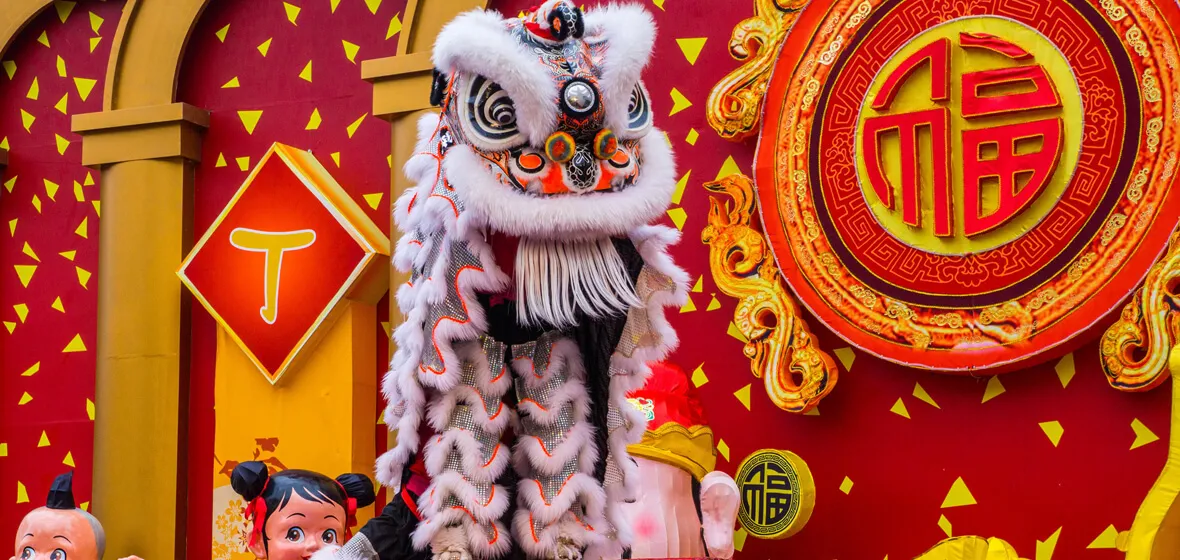
The Lion Dance is a traditional performance in Chinese culture with roots dating back thousands of years. It is commonly seen during festive occasions, especially during Chinese New Year and other important celebrations.
The Lion Dance involves performers dressed in a lion costume, often consisting of a vibrant lion head and a long, colorful lion body. The lion is operated by two or more performers who mimic the movements of a lion while inside the costume. They synchronize their movements to create the illusion of a lion jumping, prancing, and even interacting with the audience.
The Lion Dance is accompanied by loud drums, cymbals, and other instruments to create a lively and festive atmosphere. It is believed to bring good luck, fortune, and ward off evil spirits. Performers often visit businesses, residences, and public places to perform the Lion Dance, and it is customary to offer the lion a red envelope with money for good luck.
The Lion Dance has become not only a cultural symbol but also a popular form of entertainment worldwide. It showcases the artistry, agility, and teamwork of the performers and is enjoyed by people of all ages.
The Origins of Chinese Lion Dance
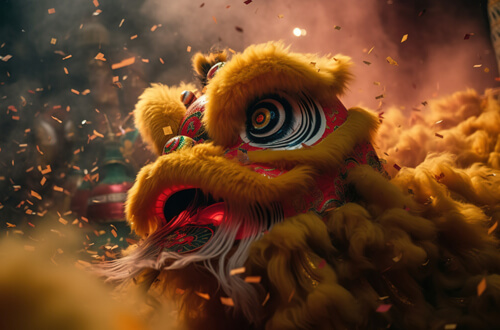
The lion is endemic to China. Legend has it that during the reign of Emperor Zhang in the Eastern Han Dynasty (25CE-220CE), the Da Yuezhi Kingdom in the Western Region(central Asia) offered a "Golden-haired Lion" as tribute to the Han Dynasty. The envoy stated that if someone in the Han Dynasty could tame the lion, tributes would continue; otherwise, diplomatic relations would be severed. After the envoy departed, Emperor Zhang chose three courageous warriors to tame the lion, but none of them succeeded. Eventually, during one of the lion's outbursts, palace attendants beat it to death. To avoid punishment, the attendants skinned the lion and disguised themselves as a lion, with one of them luring the other to dance. This ruse not only fooled the envoy from the Da Yuezhi Kingdom but also deceived Emperor Zhang himself. The incident became known throughout the Han Palace, and the general public viewed the lion performance as bringing glory to the country and representing the avoidance of punishment and the pursuit of good fortune. As a result, lion heads and skins were replicated, leading to the popularity of lion dances from that point onward.
Over time, the Lion Dance became an integral part of Chinese festivals, especially during the celebrations of the Chinese New Year. It is believed that the loud drumming, cymbal crashes, and vibrant movements of the Lion Dance help to scare away evil spirits and bring prosperity, good luck, and blessings for the coming year.
The Northern Lion Dance VS. Southern Lion Dance
The Northern Lion Dance and Southern Lion Dance are two distinct styles of lion dance that originate from different regions of China. While both forms share some similarities, there are notable differences between them in terms of appearance, movements, and cultural significance.
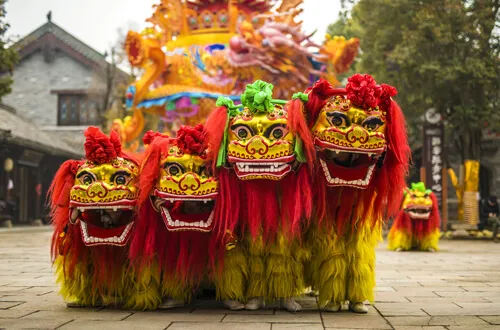
Northern Lion Dance: The Northern Lion is typically larger and more elaborate in design. It often features a vibrant, colorful appearance and may have a distinctive long, flowing mane. The head of the lion is usually adorned with large eyes and a prominent horn-like structure on the forehead.
Southern Lion Dance: The Southern Lion is generally smaller in size and has a simpler design compared to its Northern counterpart. Its appearance is more modest, with a shorter, stiffer mane and a head that is smaller and rounded. Southern Lions may feature various colors but are often more subdued in their decorations.
Northern Lion Dance: The Northern Lion Dance emphasizes powerful and majestic movements. It involves complex acrobatics, including high jumps, somersaults, and intricate footwork. The lion's movements are often more physically demanding and require great strength and coordination.
Southern Lion Dance: The Southern Lion Dance focuses more on fluid, theatrical movements. It involves agile footwork, intricate gestures, and synchronized choreography. The movements of the Southern Lion are often more graceful and expressive, imitating the behavior of a lion in a more playful and animated manner.
Cultural Significance
Northern Lion Dance: The Northern Lion Dance is closely associated with martial arts and northern Chinese folklore. It is often performed during festive occasions, such as the Chinese New Year, to ward off evil spirits and bring good luck and prosperity.
Southern Lion Dance: The Southern Lion Dance is deeply rooted in southern Chinese culture and often performed during important celebrations and rituals, including temple festivities and weddings. It is believed to bring blessings and drive away evil spirits, and it holds significance in local folklore and traditions.
While these are general distinctions, it's worth noting that variations exist within each style, influenced by different regional practices, customs, and interpretations. Both the Northern Lion Dance and Southern Lion Dance play significant roles in Chinese cultural heritage and continue to be cherished forms of performance art.
Lion Dance Etiquettes: Do’s and Don’ts
Lion Dance is a traditional cultural practice with its own set of etiquette. Here are some do's and don'ts to follow when it comes to Lion Dance:
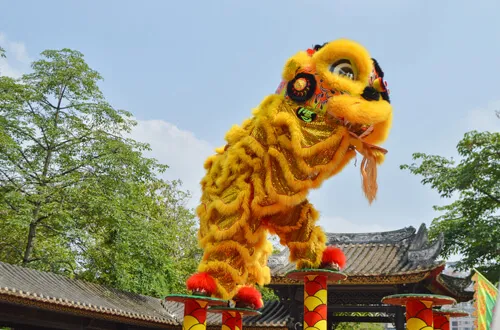
Respect the performers: Show respect to the lion dance performers by being attentive and appreciative of their skills and efforts.
Follow instructions: Pay attention to any instructions given by event organizers or the lion dance troupe. They may provide guidance on when to approach the lion or how to interact with the performers.
Offer red packets: It is customary to present red packets (also known as "hongbao") containing money to the lion dancers. This gesture symbolizes good luck and prosperity.
Be cautious with firecrackers: If firecrackers are part of the lion dance performance, ensure you maintain a safe distance and follow any safety instructions provided by the organizers.
Touch the lion's head: Unless specifically directed by the performers or event organizers, it is generally advised not to touch or pull the lion's head or any part of the lion's costume. This is to maintain the sanctity and integrity of the performance.
Create obstacles: Refrain from obstructing or interfering with the lion dancers' movements. It's important to allow them sufficient space to perform freely without any hindrances.
Disrespect the tradition: Avoid making disrespectful or disruptive gestures, comments, or behaviors during the lion dance performance. Show reverence for this traditional art form and the cultural significance it holds.
Bother the performers: While it's acceptable to watch and appreciate the lion dance closely, make sure not to distract or interrupt the performers. They require focus and concentration to execute their routines successfully.
By following these do's and don'ts, you can show proper respect for the lion dance tradition and contribute to a harmonious and enjoyable experience for everyone involved.
- Chinese New Year
- Customs of Chinese New Year
- Chinese New Year Greetings
- 3 Chinese New Year Poems
- Chinese New Year Taboos
- Chinese New Year Gift Ideas
- Red Envelopes: Hong Bao
- Reunion Dinner: Nian Ye Fan
- 4 Typical Foods on Chinese New Year
- What Do People Do On Chinese New Year's Eve?
- Chinese New Year Songs
- Spring Festival Couplets
- Chinese Lion Dance
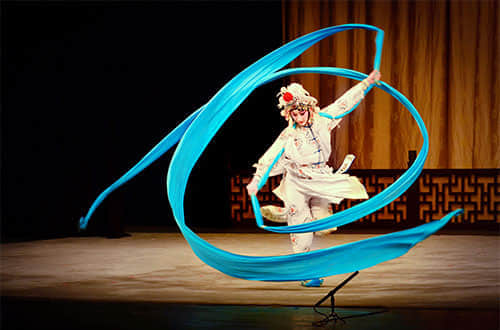

The art and meaning of lion dancing
This weekend marks the start of the Lunar New Year and the Year of the Dragon. Many Asian cultures celebrate Lunar New Year with varying traditions. San Diego Legendary Lion Dance Association explains the art and meaning of lion dances.
Growing up with a Chinese grandfather meant that my family got to celebrate every year. My grandfather would tell us about being a boy in China and celebrating for 15 days with food, family and, of course, firecrackers.

The ones he loved as a child were the "string" firecrackers, made up of hundreds of little firecrackers, braided together by their fuses, and when you lit one end of the braid, hundreds of these firecrackers would explode, one after the other. The firecrackers are supposed to ward off bad spirits but, for a lion dancer, the smoke and the noise can be a challenge.

"That's why we tell our performers to wear a mask and wear earplugs, as well," said Peter Khem, team leader and coordinator with San Diego Legendary Lion Dance Association. "The purpose behind lion dance is to ward off evil spirits and bad luck, and bring the good luck and prosperity to any individual or group. When people see the lion dance, it's not just a dance. It's basically a Chinese martial arts form."
Lion dances are a popular tradition in Asia during Lunar New Year, but you might wonder: Why a lion? Lions are not native to China.
Lion dancing dates back thousands of years, to the Tang Dynasty, and a legend about the emperor having a dream in which an animal he deemed to be a lion saved his life.
"People didn't know what a lion was, so they basically just went off on what the emperor saw in his dream," Khem said.

That’s why the costume for the lion dance is so stylized and spectacular. It is often colored a bold red or bright gold with large eyes, fluffy rounded ears, a big mouth and flowing body. It is amazing to see a pair of dancers breath life into what is essentially a large puppet.
"There's two positions," Khem said. "There's the head and tail. As a head player, your job is to portray the lion’s expression, which can be anything: happy, anger, sadness. And, as a tail, your job is to follow the head player's footwork. Because, whatever footwork the head does, the tail does with it. And, if you're doing stunts, the other jobs as a tail is be able to lift your partner up."

The result is a fluid, graceful and energetic performance in which a lion might jump on tables, rise up on its hind legs or prance around a crowd, all to very distinctive and vibrant music created by a trio of instruments.
"There's the drums, which is the heartbeat of the performance, the cymbals and the gong," Khem said.

The head of the lion can be extremely expressive as the dancer operates strings and levers to wiggle the ears, blink the eyes, and open and close the mouth.
"As a head player, your main role is to portray a strong, good expression and storytelling," Khem said. "Basically, the way I see it is, like any form of dance, it's not just like synchronization with the music and coordination. You have to give the lion life because, in lion dancing, you have to play the character of a lion. It's all storytelling. And it has to be something that's captivating for the audience to understand."

The lion’s head is made of bamboo, papier-mâché and fabric. It can cost a thousand dollars. It can also be a challenge to operate.
"When you wear the costume, you have very limited vision," Khem said. "If you're a head, you mainly look through the mouth, while at the same time you have to listen to the music. Because, in lion dancing, it's a lot of multitasking."
It also takes a lot of cardio and strength, which is why a lot of the dancers are also into martial arts. Being inside a beautiful flowing costume can make spectators forget how much work and stamina it takes to perform multiple five- or six-minute routines in a row. People may also see lion dancing as something just for Asians.
"We want people to see that lion dance is for anyone, regardless of race, gender or religion," Khem said.

Legendary Lion Dance Association has been around since 2000, with male and female team members as young as 13.
"Our goal is to preserve and promote the Chinese culture and art," Khem said. "We are very proud and honored to still continue this art. And we hope that we can inspire more people in the young generations to be part of the Lions community."
Lunar New Year is the perfect time to share and celebrate that culture and heritage.
San Diego Legendary Lion Dance Association will be performing its midnight lion dance show Friday starting at 10 p.m. at Chua Ba Thien Hau. You can find a schedule of performances on the group's Facebook page .

How the 1,000-year-old lion dance has moved with the times
Lunar New Year is the busiest time of the year for the troupes who spend months perfecting ever more daring routines.
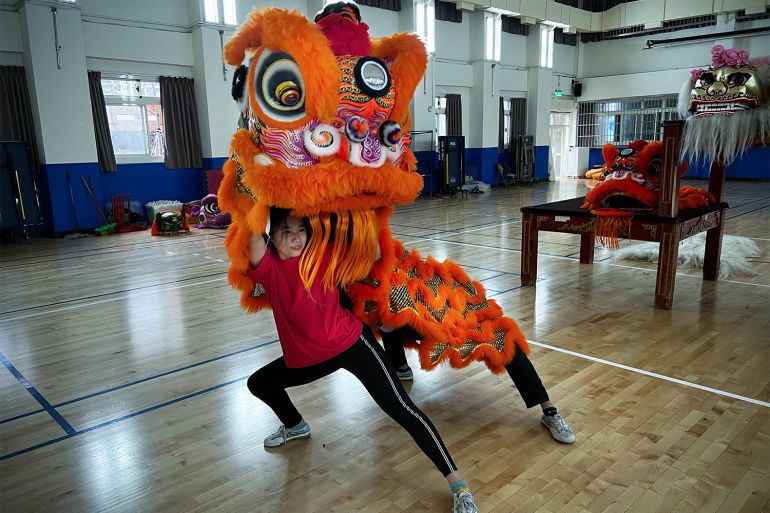
Taichung, Taiwan – First come the practice drills to warm up as a dozen young men – and one woman – kick, sweep and pirouette to the beat of a large traditional drum. Then they take turns performing the same moves while holding a large lion mask – which threatens to engulf some of the younger students completely.
A few then practice in pairs – one holding up the lion’s head while the other, bent over and covered in fabric, follows in step to create the effect of an animal brought to life. Eventually, the dancers will also need to manipulate the puppet’s face as they move, so it blinks and opens its mouth like a real animal. By the end of every two-to-three-minute routine, everyone is out of breath.
Keep reading
In pictures: year of the tiger comes in with a whimper not a roar, little cheer for year of the tiger in hong kong as covid bites, ahead of lunar new year, thailand’s poor feel sting of inflation.
“This is blocked practice. We teach them a new movement and they practice 10 times together,” said Chen Chung-yu, who chairs the department of physical education at National Taiwan Sport University in addition to coaching students in the lion dance.
The point, he says, is to give students a sense of how to improvise by testing out different combinations of movements.
Lion dances are one of the most iconic performances in the Chinese cultural world and are held throughout the year to mark religious festivals and bring luck. The Lunar New Year, however, is the busiest time of the year and with the start of the Year of the Tiger , many performers have been preparing for weeks for back-to-back performances.
Tradition as a team sport
For many of Chen’s students, the lion dance is a cross between a team sport and dance class.
Taiwanese students begin practising at a young age, much like tennis, football, or gymnastics.
“My family didn’t know what to do with me,” said university student Chen Zhenyuan, describing his energetic personality as an eight-year-old. So his parents signed him up for lion dance.
His past training focused on variations of the lion dance from southern China like the iconic “Cantonese” style, whose furry, full-headed mask can be seen on streets from Hong Kong to London chasing away bad luck. The performance is often highly interactive, with the audience giving gifts to the lion as the performers make the animal flirt and pose to the beat of the drums and the clash of the cymbals.
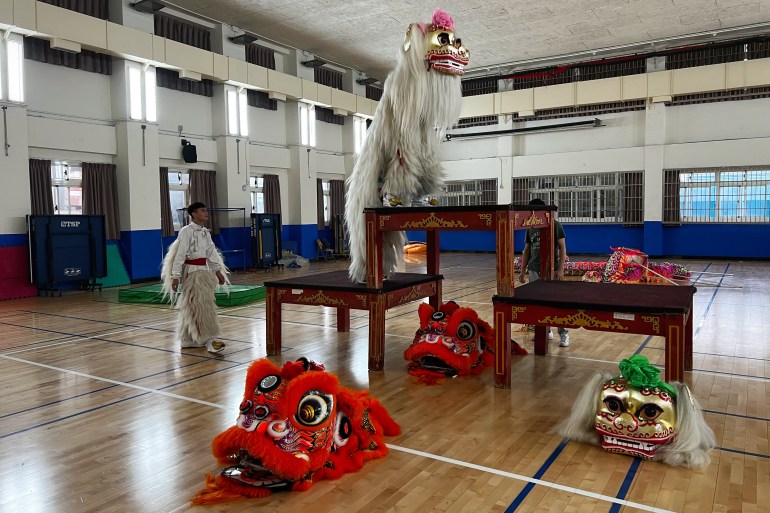
Now that he is older, Chen has finally started learning the more acrobatic northern Chinese or Beijing-style dance, where a pair of performers jump together in unison on and off stacked table-like platforms, mimicking the movements of an agile and enormous big cat.
There are competitions from school up to the international level with a World Championship in the Malaysian highland resort of Genting every two years.
The strength and agility required for some performances are one reason why university student Qiu Zifang suspects she is one of the few women at practice beyond two female instructors. Qiu, who first saw the lion dance at a local temple near her home, was inspired to join her high school team and won several medals.
She says that “because this is a kind of folk custom, there are more men”, in keeping with the gender stratification found across traditional Chinese culture. In Taiwan, at least, this attitude has changed as many school teams now receive government funding.
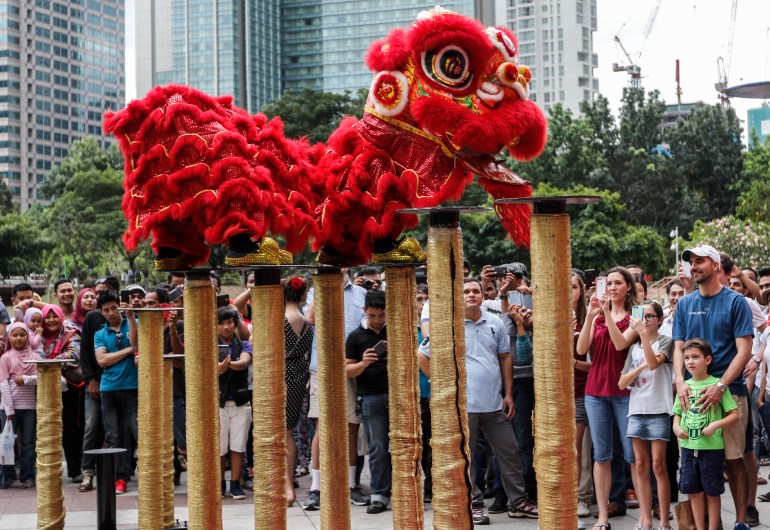
Chen’s students also get the chance to learn the Taiwanese Hoklo and Hakka styles, which come from two of the island’s first Chinese ethnic groups. Movements in both variations echo the dance’s martial art roots as it was once practised by early immigrants to keep up their physical fitness and fighting skills, much like the Taiwanese folk martial art Songjiang Zhen or the Songjiang Battle Array, Chen said.
Innovations
At competitions, performances are typically divided into “northern” or “southern” lion dance to standardise the judging, but there are a huge number of variations based on location, cultural background, and even a particular lion dance master, said Tsun-Hui Hung, a Taiwanese musician and academic who has written about the history of Taiwan’s lion dance for the scholarly non-profit Association of Asian Studies.
“Chinese culture is not just one big culture, it’s more like an umbrella term. So, you have something called the ‘lion dance,’ but then the decorations and the way they do the steps are so different from location to location,” she said from her home in Hawaii, where she is also a well-known musician who plays the erhu (a traditional two-stringed instrument played with a bow) and often performs alongside lion dancers.
“In Taiwan, back in the 1800s, people practised lion dance because they wanted to have physical training, but then for other regions, they really just want to (perform) to bring good luck for to community, so they all have different reasons,” Hung said.
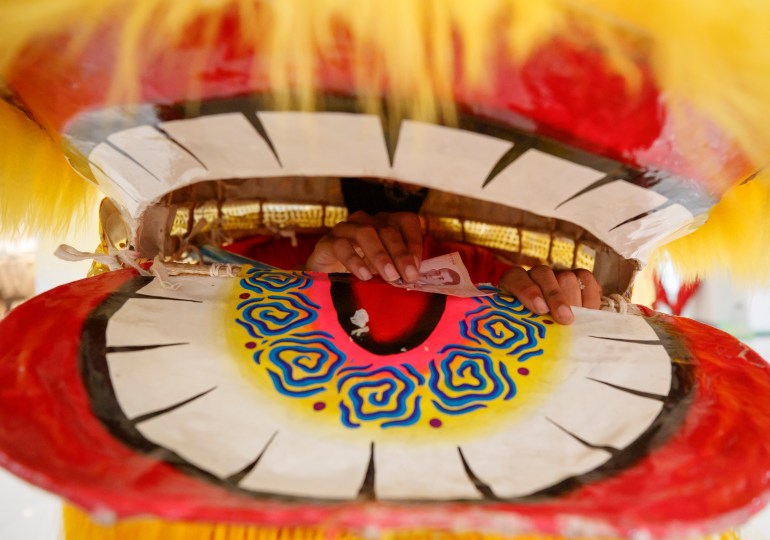
The development of the 1,000-year-old lion dance has benefitted from the huge Chinese diaspora, with overseas Chinese and Taiwanese keeping the tradition of lion dance alive when it was banned during China’s Cultural Revolution, while also adding their own spin.
Malaysian and Singaporeans masks are valued by many performers because they are made with lighter materials than the originals, while Malaysians are widely credited with developing a stunt where performers jump between high, narrow poles – sometimes over water.
Once a performance staple in Southeast Asia, the popular trick is performed in competitions around the world and has even made its way back to China.
Taiwanese melting pot
Many Taiwanese troupes also have a distinct flavour of their own thanks to the island’s unique immigration patterns, said Wang Qing-zhong, who heads the four-generation Ching Ho Kuang Lion Dance Troupe in Taipei’s Wanhua district.
Taiwan’s first immigrants originally hailed from Fujian but, at the end of the Chinese Civil War, millions of refugees fled to the island, bringing with them cultural practices from across the country. For the first time, people who had been isolated in different provinces suddenly found themselves living side by side for the first time.
As the first in his family to study lion dance, Wang’s father learned a hybrid style from the southern Guangdong and Guangxi provinces because its founding members – two military officers seeking to keep fit – created a single hybrid troupe that united styles from different provinces.
While the founders originally taught only students born in China, they eventually allowed in Taiwanese members like Wang’s father as old and new arrivals began to blend together, not only in cultural activities but also across Taiwanese society.
The Ching Ho Kuang Lion Dance Troupe has continued the Guangdong-Guangxi tradition even though their family originally came from elsewhere in China, but Wang says a similar pattern was repeated across Taiwan as styles became “mixed up together.”
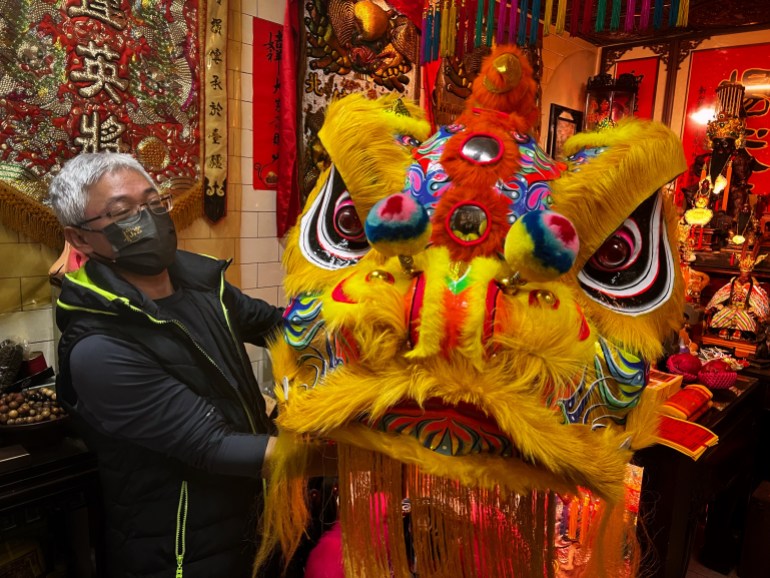
This mixing and cultural exchange between lion dance troupes continue to the present day, thanks to technology.
From sharing VHS tapes of performances in the 1980s to the arrival of the internet in the 1990s and 2000s, the lion dance has kept evolving.
“The practice is proliferating because you can watch a YouTube video of this and learn how to do it and it’s really easy to go online and buy the equipment, whereas before you had to go in person to find someone to teach you,” Wang said.
In Taiwan, the method of choice for learning lion dance still appears to be joining a troupe or studying it in school, but as the Year of the Tiger gets under way, every type of lion dance will be on show around the world.
9 Fierce Facts About the Lion Dance
By marina wang | feb 2, 2022, 8:00 am est.
Each winter at the turn of the lunar calendar, the lion dancers put on a lively performance, gamboling about to the beat of pounding drums and crashing cymbals. It’s a dazzling spectacle meant to draw in luck and prosperity, and as such, graces celebrations like the Lunar New Year , birthdays, or weddings where Chinese diasporas have landed around the world. Here are nine things you might not know about the ancient tradition.
1. The prevalence of lions in Chinese culture stems from Central Asia and Persia.
Lions never historically inhabited China, so how did the felines come to be such a common cultural fixture? Their origin in Chinese culture begins in the Han Dynasty (202 BCE–220 CE), when the Silk Road was established to connect China with Europe. Along the way, emissaries from Persian and Central Asian states would gift lions to the Chinese emperor. The popularity of this imperial beast then percolated from the high courts onto the masses. Lions also play an important role in Buddhist mythology, which began spreading throughout China in the late Han Dynasty.
2. The lion dance is over 1000 years old.
After lions were introduced to the popular imagination, the animal may have been incorporated into the existing traditions of animal pantomimes. Historical records from the Three Kingdoms period (220–289 CE) describe people dressing in lion costumes for Buddhist festivities, and later in the Tang dynasty (618–907 CE), the lion dance became a well-documented court festivity.
3. There are different styles of lion dance that vary regionally.
Although rooted in China, the lion dance has spread across East Asia, with each region adding its own local variations . An array of styles abounds in Japan and Korea. In Indonesia, the lion dancers wear huge fur coats with hefty heads. The white and green snow lion is emblematic of Tibet, while the Fujian province created a demonic green lion to represent the invading Manchurians during the 17th century.
Within China, the lion dance can be broadly divided into Northern and Southern styles. The Northern lion is red and yellow with a shaggy fringe, and is usually performed with a male and female and sometimes little cubs. The Southern lion, originating from the Guangdong province, is the most common type seen on the international stage. They usually come with a fur trim and an array of flamboyant colors, and are further subdivided into the futsan and hoksan styles. The former is meant to look more aggressive and the latter more cat -like and playful.
4. The lion dance was briefly banned in Hong Kong because rival gangs would conceal weapons in their costumes.
During the Cultural Revolution, the lion dance was seen as primitive, so the tradition was purged from much of mainland China. The custom, however, thrived in Hong Kong, where students practiced it in martial arts schools. Because the lion dance takes many of its basic stances and movements from kung fu, schools would use it to show off their prowess to rival martial art academies.
Things took a violent turn , however, when martial arts schools began associating with Hong Kong’s triads, a local organized crime syndicate. Rival gangs would conceal knives within their costumes to slash at the competition, and performing a lion dance became an excuse to duke out territory disputes. This led to a temporary ban in Hong Kong during the 1970s and ‘80s. Now, after some reputation management, the lion dance is once again a celebrated custom—assuming you have a permit.
5. The lion dance features prominently in several Jet Li films.
If you want to see the lion dance and martial arts in action, check out Jet Li’s Once Upon a Time in China III (1992) and Once Upon a Time in China IV (1993), where the Southern Chinese style of lion dance is central to the plot. To check out the Northern style, watch Shaolin Temple II (1984) and Martial Arts of Shaolin (1986). If you’re more of a Jackie Chan fan, his early film The Young Master (1980) opens with an iconic lion dance battle.
6. Women were barred from doing the lion dance.
Martial arts academies were historically fraternities, so women were generally excluded from practicing the lion dance. Since the martial art fraternity paradigm has largely dissolved, dance troupes have gradually warmed to women joining their ranks. Now, there are several women-led lion dance troupes around the world.
7. The lion dance makes appearances in the Guinness World Records.
In January 2011, the Hong Kong Dragon and Lion Festival Preparatory Committee organized a bonanza with 1111 lions—a total of 2222 performers—dancing in the streets of Hong Kong for the Lunar New Year. It became the largest paired lion dance in history.
Later that year, another record was set when 3971 schoolchildren in Taiwan each donned a lion costume and performed the world's largest singly operated lion dance show.
8. Chinese Malaysians invented the extreme sport of high pole lion dancing.
The lion dance has historically been performed on the ground or in small obstacle courses, with lions leaping up onto chairs, balance beams, or upturned vases in a spectacle of balance and athleticism. This show of acrobatics was turned up a notch when Chinese Malaysians began performing routines on high wooden stilts. In the early ‘90s, this became a standardized arena of metal poles ranging from 4 to 8 feet in height, and the high pole lion dance as a competitive sport was born.
Performances are scored out of 10. To impress the judges , teams must choreograph a seven-to-10-minute-long routine where they leap between poles while performing acrobatic stunts. The most prestigious international competition has been held every other year in Malaysia's Resorts World Genting since 1994. During the 2018 games, 36 different teams competed from 16 countries.
9. The lion dance is getting a modern makeover.
Chinese Malaysians aren’t the only performers revamping an ancient tradition. Teams in Singapore and Hong Kong have incorporated LED lights, EDM, and hip hop into their routines. Kwok’s Kung Fu and Dragon Lion Dance Team in Hong Kong puts on a show with hip hop dancers clad in Tron-like suits bopping alongside flashy Chinese lions synchronized to EDM.
This story originally ran in 2021; it has been updated for 2022.
- Lion dance tradition roars back to life
Wagging its head and tail, tweaking its ears and scratching its cheeks -- a scarlet "lion" was cavorting on the ground during its daily practice in Tengxian County, south China's Guangxi Zhuang Autonomous Region.
After performing the routine, two lads doffed the costume -- Qiu Haiwei, 17, who performed as the head of the red lion, and Huang Qingliang, 16, as the tail. Both are dance majors at the county's secondary vocational school.
The lion dance, a traditional Chinese performing art, is often staged for entertainment on festive occasions including Spring Festival. The tradition dates back to the Three Kingdoms Period (220-280 A.D.) and saw its heyday in the Southern and Northern Dynasties (420-589 A.D.).
The county's lion dance, which mimics a lion with martial and acrobatic styles, was listed as a national intangible cultural heritage in 2011.
"The lion dance has been an indispensable part of life in the county. In my childhood, whenever the beating of drums and clanging of gongs was heard, I knew the lion dance was on and rushed out to watch," Huang said.
"The lion leaped from pole to pole as if it were flying," Qiu recalled his memory of the performers' breathtaking skills.
Full of love and curiosity for the traditional art, the duo started learning the dance two years ago. Learning the performing art was another matter entirely.
"It took us half a year to learn the basic skills and various moves. We practice so hard that we are always drenched in sweat and sometimes even injure ourselves," Huang said.
Dancing on the poles makes the art a gripping spectacle. There are 21 poles of heights between 1.2 meters and 2.5 meters with up to 1.8 meters between them. A single false step will send the performers tumbling to the ground below.
The hard work paid off. From squatting to prancing, and making a life-size lion puppet that can blink in accord with their manipulation of hidden poles, the brothers' lion dance improved, which earned them opportunities to perform at celebrations like the grand openings of businesses, and to compete against other local lion dance troupes.
Besides dancing, youngsters in the school also learn to make costumes. "We make lion heads, tails and legs in our school's workshop under the guidance of professionals," said Qin Jinmin, a 16-year-old drummer, who often accompanies Huang and Qin during dance practices.
"Though making it all by hand is a demanding task, it is worth learning, not only for mastering skills to earn a living but also for gaining a better understanding of the lion dance," Qin said.
Still, the ancient art form has fallen out of favor with the young generation, as the skills take years to master while only a meager wage can be earned.
Professional coaches and funding are hard to find, making it even more arduous for a lion dance troupe to survive, according to Deng Minghua, a national inheritor of the cultural heritage.
Local authorities have set up four training bases since 2017 and teamed up with enterprises and schools to help reboot the ancient art. The Tengxian secondary vocational school also launched a lion dance class and a training venue to foster more lion dancers.
"We must work hard to help pass on the heritage and its spirit through the generations," Deng said.
Go to Forum >> 0 Comment(s)
Add your comments....
- User Name Required
- Your Comment
- The lion dance, a traditional Chinese performing art, is often staged for entertainment on festive occasions including Spring Festival.
Kulture Kween
Serving bite-size world culture while catching up on life.
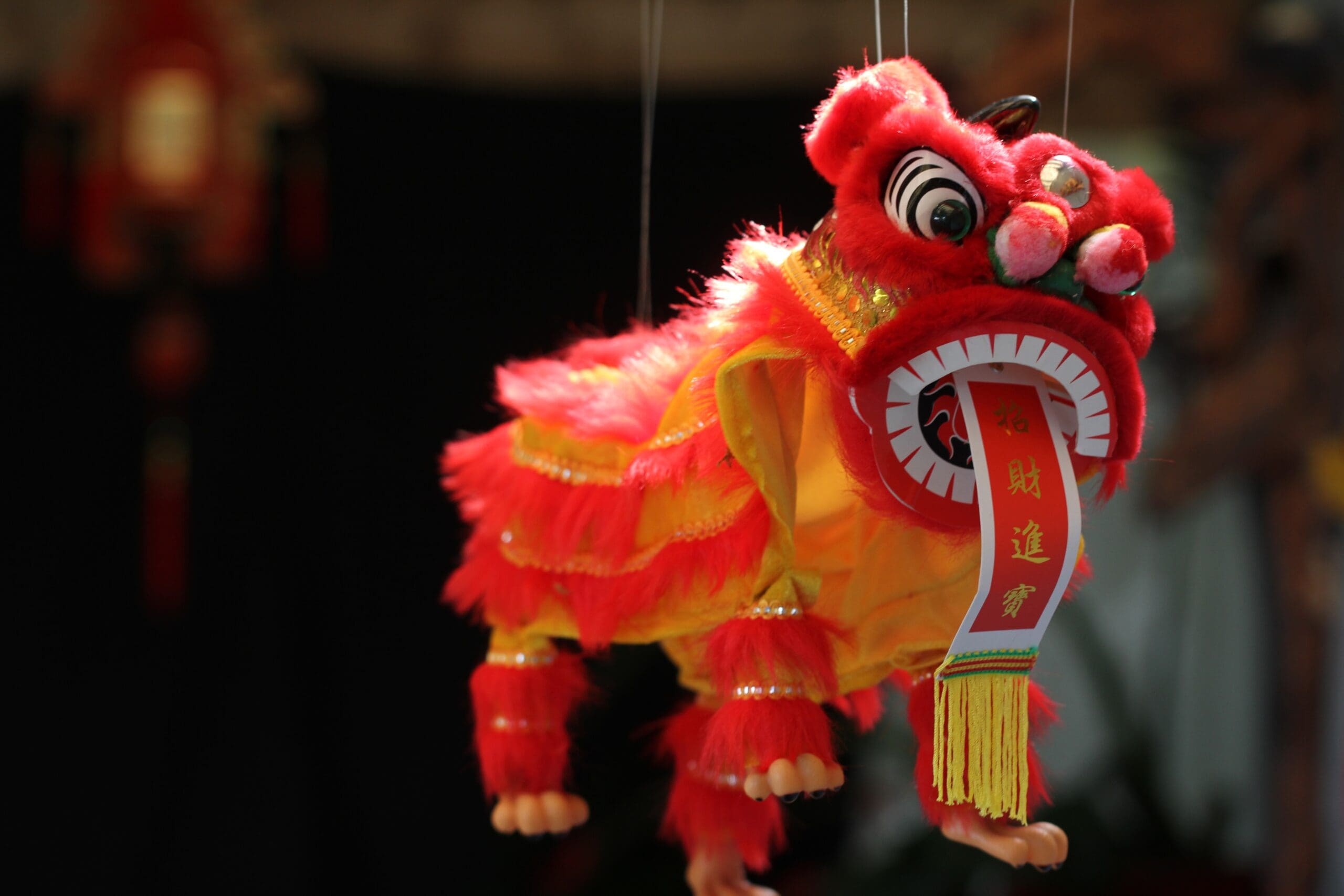
Lion Dance A Significant Tradition of Chinese Culture
Chinese New Year or Lunar New Year is one of the biggest yearly celebrations in China. It’s filled with cultural significance, celebration, and lots of family time. There are many aspects of this Festival that are traditional, beautiful, and memorable. One such piece of cultural pie is the Lion Dance.
Chinese Lion Dance
The lion is a symbol of power and wisdom, and as such it is used as a symbol to help bring luck and posterity into the new year, as well as ward off evil. You may be familiar with the images of dancing Chinese dragons – which have some similarities but aren’t the same. While both types of costumes are ornate, with a large head operated by one person and a trailing body, you can tell a dragon dance from a lion dance easily by the number of people in the costume. Lion dances only have two performers, while the long body of the dragon is represented through many performers in a shared costume. This allows for different styles of movement and incredible acrobatic feats.
One really interesting thing that connects the two is that both are culturally considered to be in the same category of mythical creatures. This is because lions historically haven’t lived in China, so when these traditions arose, the people weren’t exposed to living lions, which allowed the idea of lions to fall in the same category as Chinese dragons .
As with many pieces of Chinese culture, there is a lot of variation in how lion dances are performed. There are two main styles – northern and southern. The south has greatly influenced how the dance is performed outside China, particularly in South East Asia.
Northern Lion Dance
The face of a northern lion is considered to look meaner and more aggressive. The colouration on a northern lion is primarily red and gold/yellow, the colors of china. The northern movement style is more rooted in martial arts, acrobatics, and gymnastics, and often includes incredible stunts. These stunts on their own are incredible to conceive of, but just imagine doing them while holding a giant head or needing to be perfectly in sync with a partner! These performers train extensively to be able to accomplish something so amazing.
Southern Lion Dance
The southern lion is more fluffy, less angry, and has a completely different movement style. The southern lion’s movement is based on studying the real movement and behaviors of a lion. It makes the performance more playful, and even comical at times.
The lion dance is just one of the countless beautiful Chinese festival traditions. The performers go through intensive training to make themselves part of the cultural effort to celebrate China through tradition and history. They’re incredible to see, and should definitely be on the list of things to see during Chinese festivals.
Have you ever seen the Chinese lion dance performance?
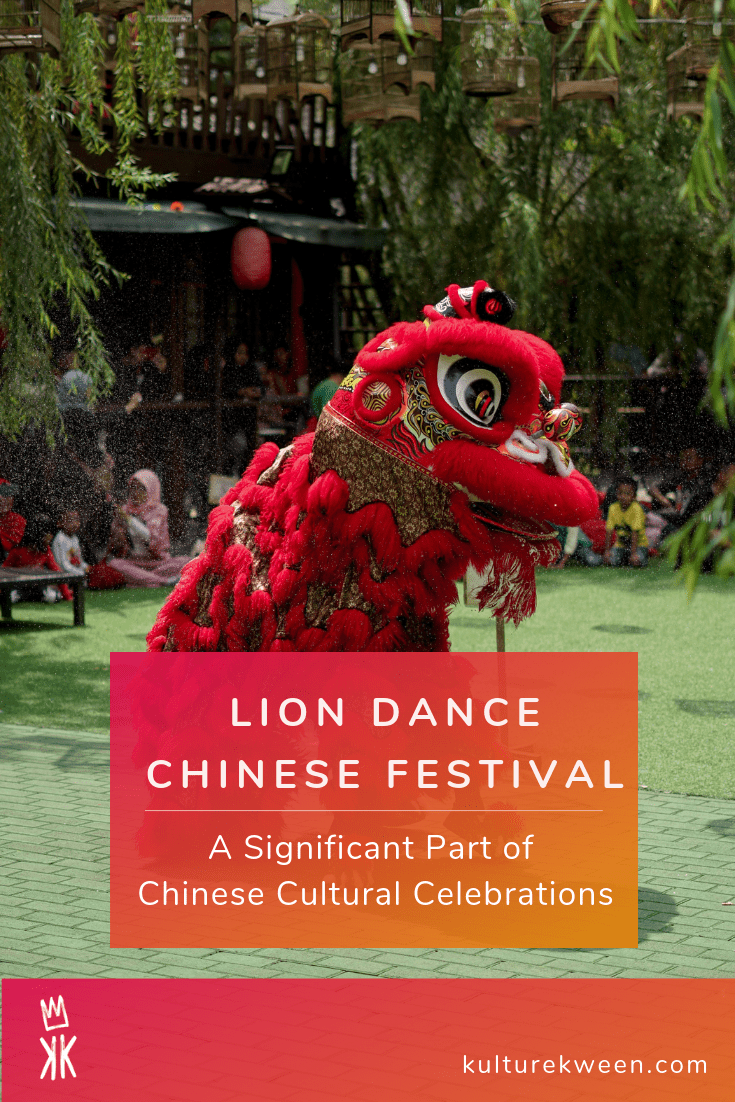
- Chinese Culture
You might be interested in
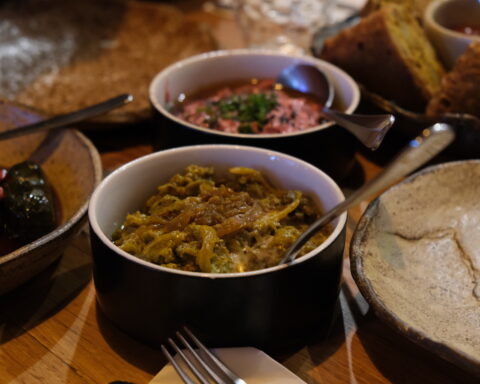
MFWF Sunshine Wander of Iranian Nibbles, Ethiopian Platter and Viet Flan in Melbourne
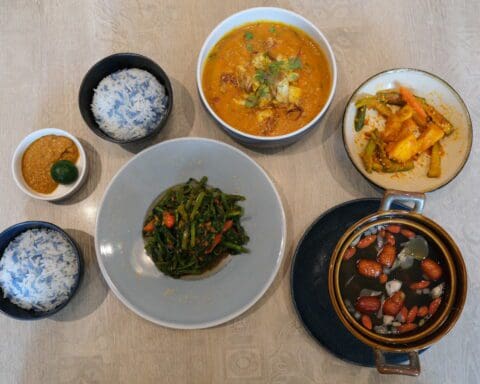
Hearty Peranakan Cuisine in Bonding Kitchen Singapore
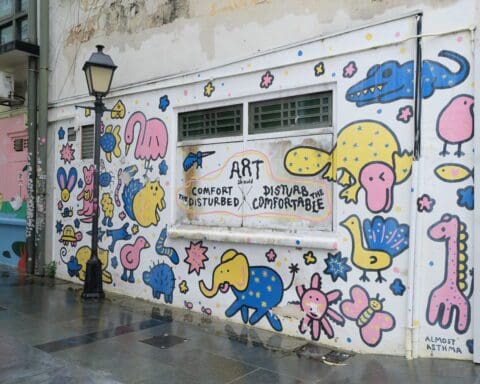
Not a Newsletter: Mar23 Edition
[…] the Lion Dance in the Chinese culture to the Egyptian Sphinx, Lion symbolises bravery, power, strength, and protection in most […]
Leave a Reply Cancel reply
Your email address will not be published.

Tsukiji Outer Market Hustle and Bustle
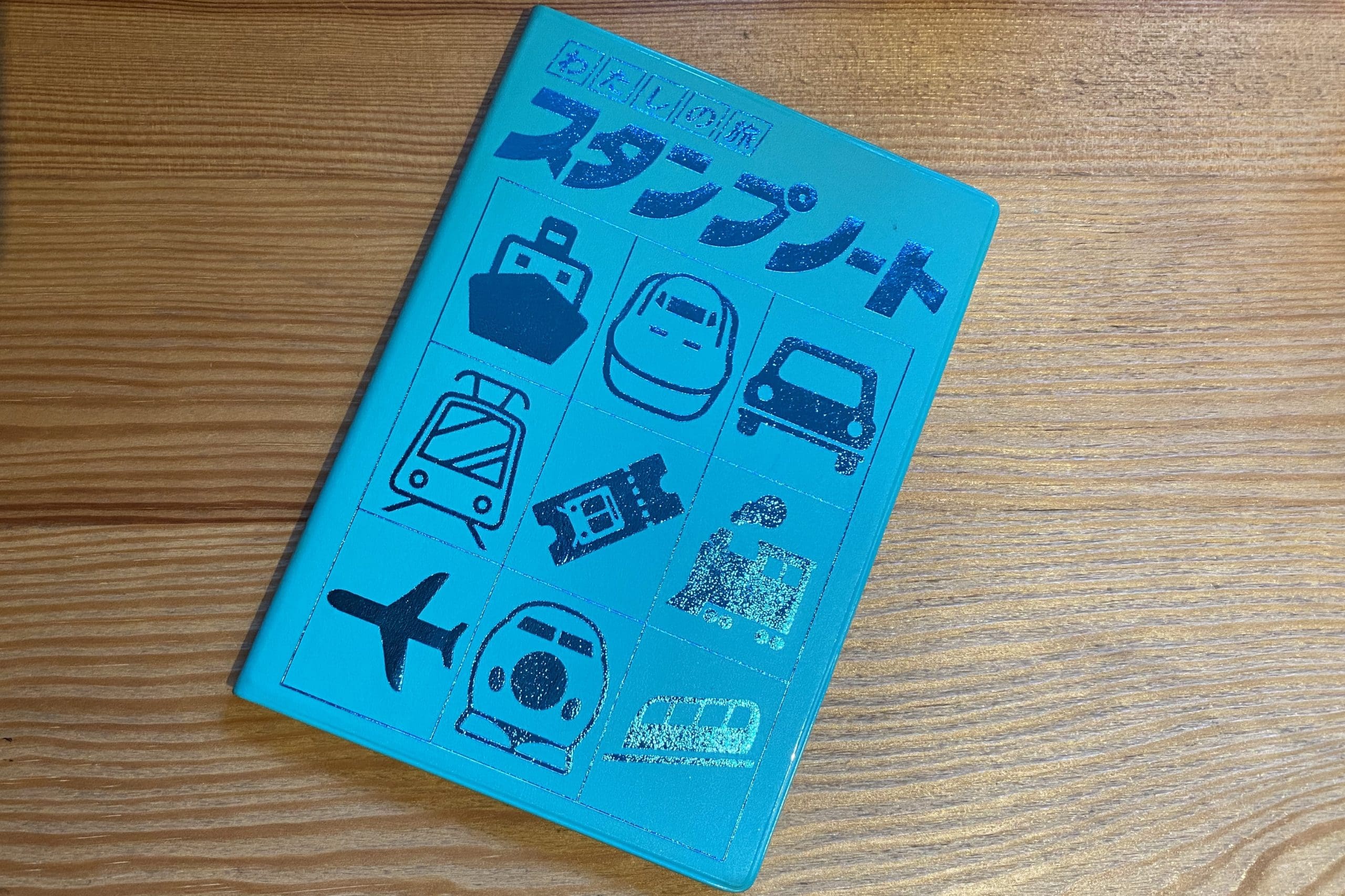
Eki Stamp Your Way Through Japan Train Routes
Academia.edu no longer supports Internet Explorer.
To browse Academia.edu and the wider internet faster and more securely, please take a few seconds to upgrade your browser .
Enter the email address you signed up with and we'll email you a reset link.
- We're Hiring!
- Help Center

Dancing with Lions: The Assertion and Transformation of Chinese Community and Identity in Belfast

In this article I show why the southern-Chinese cultural form of the Lion Dance has become popular within the Chinese community in Belfast. I explain the ways that the Lion Dance offers an assertion of identity for Chinese migrants in Belfast, while creating a community of practice that socializes non-Chinese participants into Chinese ways of acting and interacting. Finally, I show how within this community of practice in Belfast, Chinese identities are not only expressed, but transformed.
Related Papers
Transcultural Cities: Border-Crossing and Placemaking
Jayde L Roberts
This paper takes an auto-ethnographic approach to questions of belonging and inclusion through anthropological analysis of my own experience as a Chinese dancer in Belfast, Northern Ireland. The Chinese community in Belfast has been well established since the 1970s, retaining a distinctive identity within a city dominated by 'British' and 'Irish' ethnici
Rachel Watford
Lion dance in the United States has gone through drastic changes since the 1990s. These changes have created a multicultural, pan ethnic, and diverse art form that communities from all over the nation use to connect to their heritage and identity. While many Asian Americans use this lion dance as a way to connect to their heritage, lion dance has also being transformed into part of the American culture. There are also a lot of parallels with the directions that the lion dance community and Asian American community are heading in terms of visibility. Lion dance has become a proxy of Asian American struggles in the U.S. for many of the performers. This thesis looks at how lion dance is growing and spreading in the US, how it has turned into a multicultural and pan ethnic tradition, and the subtle ways it is use politically in the U.S. INDEX WORDS: Multicultural, Asian American, Heritage, Tradition, Globalization, Diaspora LION DANCE IN THE UNITED STATES: EXPLORING PANETHNICITY AND IDE...
Konrad Aderer
The Lunar New Year festivities in Manhattan’s Chinatown are among New York City’s best-known ethnic tourist attractions, drawing thousands of spectators who come primarily to see the lion dance performances. Each year, more than 20 lion dance groups perform for hours at a time, bringing to life huge, colorful creatures thrashing through the streets to clamorous drums and cymbals. Who are these groups, and why are they there? Are they an authentic manifestation of Chinese culture, a programmed ethnic spectacle for the benefit of tourists, or something else entirely? For centuries, lion dancers have appeared wherever the Lunar Year is celebrated around the world. In a Chinatown that has struggled to revitalize its identity and economic health in the years after 9/11, how are these groups connected with this urban ethnic enclave’s economic and cultural transformation? Adopting an urban culturalist approach, this research focuses on the intersection of culture, place and community that unfolds in this festival. Video and digital photography yield data on its spatial and experiential aspects, which I analyze using the Situationist International’s vision of unitary urbanism as a starting point. Through interviews and participant observation I synthesize these findings with an ethnography of the Chinatown lion dance groups to show how this familiar but little-understood spectacle arises from urgent community needs and narratives.
Cambridge Scholars Publishing
Pablo Baisotti
The Third Report of the Continued System of Reports on International Migration in the Americas, 2015, noted that Argentina remained the country in Latin America with the highest level of immigration. By 2013, the country had received nearly 140,000 permanent immigrants and approximately the same number of temporary immigrants. From 1990 to 2013 the foreign-born population ranged from 5.1% in 1990 (1,649,919 inhabitants) to 4.2% in 2010 (1,540,219), stabilizing at 4.5% between 2010 and 2013 (1,805,957 and 1,885,678 inhabitants respectively). In 2015, according to the statistics provided by the United Nations, 2,086,302 immigrants (4.81% of the total population) with “Permanent” or “Temporary” residency status lived in Argentina. The former may be granted to persons inside or outside the country; included in this group are those who initially had temporary permission to reside in Argentina. According to the National Direction of Migration, permanent and authorized international immigration in Argentina remained relatively stable between 2004 and 2006 (18,652 and 25,447 immigrants respectively) and rose to almost double those figures in 2007 (50,215).
Amirul Husni Affifudin
Henry Johnson
Over the past few decades, New Zealand’s cultural landscape has changed as the result of increased immigration from Asia. One consequence of this transformation has been an increased number of public celebrations that place Asian cultural practices at their core. These “festivalscapes” act as contact zones in the study of Asia in the making of Aotearoa/New Zealand and help show how the nation has changed and responded to its new cultural diversity. This article applies Appadurai’s (1996) notion of “scapes” to select Asian festivals in New Zealand with the aim of illustrating some of the contributions that Asian cultures make to New Zealand, as well as discussing some of the consequences of this change. The discussion shows how top-down intervention and bottom-up activism operate to produce the spectacle of the festivalization of Asia in the contemporary New Zealand cultural milieu.
Fung Chiat Loo , Fung Ying Loo
This article looks into the evolution of the diasporic Chinese lion dance in Malaysia. More importantly, it examines how this traditional art genre stands out among the many other genres that have withstood extinction. Although once regarded as foreign to the national culture in Malaysia due to its identity as a Chinese folk art, it was first threatened, but not abandoned. Malaysia eventually responded by merging the northern and southern lion styles and developing a World Lion Dance Championship. This paper will elaborate on the origin of the lion dance, and examine its changes that may be factors in its sustainability. More importantly, the article examines the political concept of 1Malaysia introduced by Prime Minister Dato' Sri Haji Mohammad Najib Tun Haji Abdul Razak in 2008 that has brought a paradigm shift to the lion dance in aiming for national unity. Kun Seng Keng Dragon and Lion Dance Troupe's practice exemplifies this phenomenon. Loo Fung Ying, a senior lecturer at Cultural Centre, University of Malaya, is a composer and music arranger in Malaysia. Her research interest includes Chinese musical theatre, Chinese music, and the application of tai chi to the physicality of music performance. Loo Fung Chiat, a senior lecturer at the Department of Music, Universiti Putra Malay sia, is a composer and music arranger in Malaysia. Her publications focus on audience study, music analysis, and performance practice.
Monika S Winarnita , Natalie Araujo
Dance performances embody both the potentialities of multicultural and cosmopolitan identity and their contradictions. Through an ethnography of Chinese-Indonesian female migrants in Perth, Western Australia and their dances, this paper provides a window into understanding an intertwining of 'glocal' affiliations and cosmopolitan self-representations. Representing the largest visible group of Indonesian migrants in Australia, the Chinese 'descend-ants' (keturunan) perform as Indonesian traditional dancers on the Australian multicultural stage, to 'celebrate the institutions of the state(s) in which [they] live' (Appiah 1997, 633). Nevertheless and perhaps inevitably, this cosmopatriot identity was often tinted with uncertainty due to the ambiguity surrounding their positioning as a legally and culturally accepted ethnic group in Indonesia. When viewed as 'ethnic' dancers from Jakarta, these women were seen as 'legitimate' cultural representatives; the Indonesian migrant community accepted the discourse of Chinese historical settlement in Jakarta, creating a cultural syncretic influence. However, their own internal sense of belonging was disrupted, particularly due to the lingering memory of the violent 'May Riots' of 1998, which targeted Chinese-Indonesians. For many, the uncertainty generated by this violent episode became the reason for migration and settlement in Perth. Migration, the Australian multicultural stage, and a cosmopolitan worldview thus provide the spaces for Chinese Indonesians to express a cosmopatriotic affiliation with Indonesia despite the traumas of the riots and the realities of being in a neighbouring country.
In this chapter I will focus on the Chinese dance classes run in a multi-cultural dance studio in Belfast to prepare mostly non-Chinese dancers to perform Chinese dance in a multicultural festival.1 I will first discuss the choreography of the dance and its relationship to the embodied identity of the choreographer. In my analysis, I will refer to Hobsbawm’s (1983) conception of “the invention of tradition” and will draw upon Stock’s discussion of hybridity in globalized cultural environments.
RELATED PAPERS
The ASB Polyfest: Constructing Transnational Pacific Communities of Practice in Auckland, New Zealand
Michelle Ladwig Williams
International Journal of Intangible Heritage
Alissandra Cummins
Monika S Winarnita
Kim Rockell
Deborah Wong
Thomas Green
Theatre, Dance and Performance Training
Casey Avaunt
Karen Kartomi Thomas
Narodna umjetnost
Jeanette Mollenhauer
Asian Music
Chinese Southern Diaspora Studies
Chang Yau Hoon
Proceedings of the 5th Symposium for the International Council for Traditional Music Study Group for Performing Arts of Southeast Asia
Anthea Skinner
AFRICAN EAST-ASIAN AFFAIRS
Philip A Ọláyọkù
Thomas Green , Thomas Green
Charlotte McIvor
Journal of Siam Society
Robert Cummings
Amy Swietlik
Croatian Journal of Ethnology and Folklore Research
Grazyna Szymanska-Matusiewicz
Timothy Epp
Lungphakbou Dichongta
Simin Shakeri
visit indonesia
Lee Willingham , Juliana Cantarelli Vita , Lee Higgins , Brent Rowan , Phil Mullen
Angela Marino
Heather N Buffington-Anderson
Kimberly DaCosta Holton
Procedia - Social and Behavioral Sciences
Hanita Hassan
Sounding the Dance, Moving the Music: Reconnecting the performing arts in maritime Southeast Asia, Mohd Anis and Kendra Stepputat (eds.). London: Routledge.
Lawrence Ross
Rebecca Bradshaw
Swaroopa Unni
Sustainability
Sharif Shams Imon
Heather Diamond
Daniela Ivanova-Nyberg
Dadrien N J Brown (D.bé Jayri)
RELATED TOPICS
- We're Hiring!
- Help Center
- Find new research papers in:
- Health Sciences
- Earth Sciences
- Cognitive Science
- Mathematics
- Computer Science
- Academia ©2024
How To Write An Essay About Chinese Lion Dance
Chinese lion dance, 舞狮, is recognizing as a popular art form of traditional dance in Chinese culture. It is also a physical training generally associated with ascetic expressions and martial arts. The Chinese Lion consists of a highly decorated of lion head with ears, eye lids, horn, mouth and a tail. Basically, the dance will be performed by two dancers, one at the head of the lion, one at the tail of the lion, to imitate a lion's movements and actions in a lion costume with the music instruments such as drum and gong. The dancers are wearing a t-shirt with the lion dance association’s logo and a special pair of pants with the design looks like lion’s feet. The design of the pants will match with the color of lion’s tail. The Chinese …show more content…
Today, Chinese lion dance becoming an excellent Chinese folk art performance and cultural sport which has diffused into many countries across the world, such as Taiwan, Hong Kong, Macau, Japan, Korea, Vietnam, Malaysia and Singapore. Thus, with that diffusion, there are different variations of the lion dance from different countries where each region possess their own styles to represent their country. Generally, Chinese lion dance can be categorized into two types of lion dance which is Northern lion dance, 北獅and Southern lion dance, 南獅. The Northern lion dance originated from Northeast China. Originally, the dance was used for the imperial court as entertainment. Northern lion has red, orange, yellow shaggy hair with a golden head that looks alike with Pekinese dog. The Chinese Southern lion dance originated from Guangdong. It is performed as a ceremony to chase away evil spirits and to bring fortune. Southern lion have longer tails and larger heads with various colours and …show more content…
Its lion heads are range in sizes and consist of sharper horn and squared mouth. The tails also range in lengths. Fut Shan style is a style often adopted by many kung fu schools. On the other hands, Hok Shan Lion Dance is the style created after Fut Shan Lion Dance. Its style is more contemporary which combine the Southern lion head with Northern lion movements. The lion heads are usually smaller in size; consist of a rounder mouth, and a rounded horn like a fist on top of the head. The tails are shorter and it is often used by competing teams or troupes. It is a popular lion used by lion dance association in Malaysia to compete in International Lion Dance Competition. There are various visual aspects can be found from the Hok Shan Lion. On the lion head, we can noticed that there are various colors, patterns (motive/stripe), decoration accessories are being used to form a nice composition and arrangement to make it look more contemporary. There are various types of symbolism used to symbolize colors which are mysticism (Taoistic theory of the Five Elements), animals and historical character (heroes of the ‘Three
Concise Summary: The Green Grass Clogging
Roots and branches of Southern Appalachian dance, Phil Jamison discusses past and present types of dance practiced in southern Appalachia. When talking about clogging, Phil Jamison
Comparing The Jingle Dress Dance And Powwow Dance
The women dance to the spirit in the song and dance to the beat with the drums. The dance symbolizes the power of indigenous spirituality and women. An interesting fact about the Jingle Dress dance is that the dancer wears metal cones on their dresses that were originally made by tobacco
Monkey The Journey To The Western Analysis
The novel Monkey: Journey to the West is one of the greatest classics of Chinese literature. The novel follows the adventure of Tripitaka followed by the protagonist, monkey and his disciples to India in order to find ancient Buddhist scriptures. The story consists of Chinese legends, tales, and superstitions. Daoism, Confucianism, and Buddhism, which are the three main religions in China, play a huge role throughout this story. In the adaptation of Monkey: Journey to the West by David Kherdian, religions are often woven in to the journey of the traveling companion in order to show the path toward self-cultivation and collective harmony.
The Sport Of The Charleston In The 1920's
Geographical: The Charleston was originated in an island near Charleston, South Carolina by black people. According to Harry T. Sampson in 1922, the Charleston was performed in the New Amsterdam Theater in New York during the "Ziegfeld Follies" show. This was the first time the Charleston was danced at a show by white people. The Charleston became popular the next year in the Broadway show Runnin' Wild. After this show the Charleston because the most popular dance of the 1920's.
Personal Narrative: Indian-American Dance
Through hours of rehearsals and performances, I repeatedly noticed the similarities between dance styles. As a result, when I dance, I am able to merge my two cultures. I no longer feel torn. Today, I am confident in my identity as a Sri Lankan-American dancer, who is often mistaken for an
Native American Culture Essay
Symbolism especially with animals played a huge part in the Native American religion party. Native American religion is something hard to define. In order for you to understand the meaning of their religion you have to grow up submersed in the beliefs,practices, and know the traditions of any tribe. It’s something really different, it isn’t the same as becoming a born-again Christian or converting to judaism. Each tribute and peoples had their own unique beliefs,legends, and rituals, but they all believed the world was filled with spirits.
Tap Dance History
Tap dance is a genre of dance when metal plates are fitted to the bottom of heels and when hit on a hard surface, a loud or soft sound, depending on the strength, can be made; these shoes are made to produce audible beats by rhythmically striking the floor. (Encyclopedia Britannica, 2018) Tap dance originated in the United States dating back to the 1800’s- 20th century, this style of dance was inspired from the African and Scottish dances; ever since then tap dance has been evolving into a more intricate and individual style of dance. Tap dance has now become a popular expression of dance; it is performed live and is also aired on TV and the internet. Tap Dogs and Hot Shoe Shuffle are a popular example of tap dance due to their distinct style.
Summary Of Jane Desmond's Article 'Embodying Difference'
The dancers do this so that they can display how what kind of instruments their music is made with. Through Korean Traditional Dance, dancers can show that the way they move their body, it displays their cultural meanings and social
The Chickasaw's Religious Traditions
Stomp dancing was an important tradition to the Chickasaw. They were often performed at the Green Corn Ceremony. During these dances, the Chickasaw would often dance in a circle around a fire. They believed the smoke from the fire would lift their prayers up the the creator, Aba Binni’li’. Stomp dancers moved counterclockwise with their hearts closest to the fire.
Analysis Of Portrait Of The Kangxi Emperor In Court Dress
Throughout the painting there is iconography and symbolism. To illustrate his authority, the Kangxi sits on a dragon throne, which raises him higher than his court. With Kangxi being the Emperor, his feet were not to touch the ground. The Dragon is thought to be the guardian and aide to the Emperor. In addition, the dragon is also repeated on his robe several times.
Tia Chuccha Poem
It is a type of dance that mostly dance by stomping and bending knees, so I think that it is a happy mood dance. That is what that man is feeling at that time. The similarities of the content is both of them are doing what we call freedom. The thing that show themselves. The thing that people think it is weird.
What Is Peruvian Huayno Dance
His musical accompaniment varies by region and socio-cultural stratum. It is usually often performed by large groups of people even though it is a dance of two. The dance begins as many pairings dancing about and eventually the dancers will form a large circle with one couple in the middle. There are several formations that the dancers will go in and out of throughout the dance such as an arch for couples to pass through or an enclosed circle. The steps are very fast and intricate stamping movements.

Lion King Film Analysis
Outline THESIS: The concept of the circle of life is a dominant theme in the film reflecting the state of things in the modern society. 1. The Lion King belongs to the trend of detailed naturalism. 2.
History Of Celestial Dance
The sun was the most important “dancing” celestial body and special dances, based on its movements, have been performed by many civilizations across the globe. However, there is another form of “Cosmic Dance”, and those are the ones performed by humans, based on the celestial bodies. These dances can vary in their level of accuracy with some being very close imitations of the actual movement of the constellations, while others are much more abstract and used more to tell a story rather than replicate an actual celestial movement. THE TORRES STRAIT
Essay On Chinese Culture
The traditional Chinese cultures have a development process for thousand years, now we are creating another kind of traditional culture especially under the wave of globalization. Although the form of expressing or performing the culture experienced some changes but the basic idea and belief behind rarely changed. To promote Chinese culture we would refer to the essence of Chinese wisdom so the following is actual practicing of different dimensions of Chinese traditions which show the beauty of China. The family concept is the essence of Chinese culture.
More about How To Write An Essay About Chinese Lion Dance
Related topics.
- Social dance
- Dance therapy

- < Previous
Home > College of Arts and Sciences > Anthropology > ANTHRO_THESES > 146
Anthropology Theses
Lion dance in the united states: exploring panethnicity and identity through performance arts.
Rachel Watford , Georgia State University Follow
Date of Award
Degree type, degree name.
Master of Arts (MA)
Anthropology
First Advisor
Faidra Papavasiliou
Second Advisor
Cassandra White
Third Advisor
Emanuela Guano
Lion dance in the United States has gone through drastic changes since the 1990s. These changes have created a multicultural, pan ethnic, and diverse art form that communities from all over the nation use to connect to their heritage and identity. While many Asian Americans use this lion dance as a way to connect to their heritage, lion dance has also being transformed into part of the American culture. There are also a lot of parallels with the directions that the lion dance community and Asian American community are heading in terms of visibility. Lion dance has become a proxy of Asian American struggles in the U.S. for many of the performers. This thesis looks at how lion dance is growing and spreading in the US, how it has turned into a multicultural and pan ethnic tradition, and the subtle ways it is use politically in the U.S.
https://doi.org/10.57709/14361189
Recommended Citation
Watford, Rachel, "Lion Dance in the United States: Exploring Panethnicity and Identity Through Performance Arts." Thesis, Georgia State University, 2019. doi: https://doi.org/10.57709/14361189
Since April 29, 2019
Advanced Search
- Notify me via email or RSS
- Collections
- Disciplines
- Submit ETD (Thesis/Dissertation)
- Department of Anthropology
Home | About | FAQ | My Account | Accessibility Statement
Privacy Copyright

- Sections Sections Finance Business Tech Economy China World Editorial & Opinion Weekend Long Read Research & Analysis Lifestyle Books & Arts Blog Video Caixin Weekly Sneak Peek Topics Asia New Vision Forum War in Ukraine Evergrande Crisis ESG & Carbon Goals China-U.S. Rivalry Coronavirus Hobbled Huawei Digital Currency Fintech / Internet Finance Selected CX Daily Weekly Must-Read Energy Insider Economic Indexes Caixin Explains Reg Watch Subscriber Events ThinkChina The Wall Street Journal News Graphics
- Market Data
- Company Index
Photo Essay: Lion Dancers Strive to Keep Traditions Alive as Gigs Dry Up
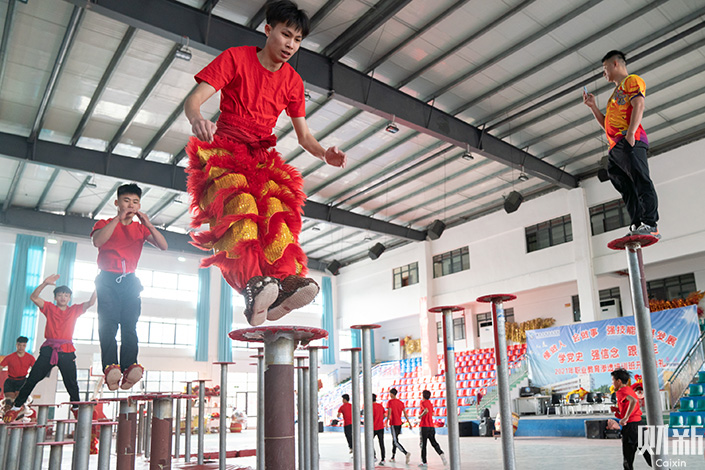
Gallery: Covid Cuts Festival Bonanza for Lion Mask-Maker
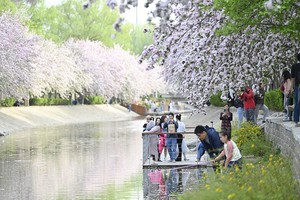
We ‘ve added you to our subscriber list.

Participation of Indian Prime Minister Narendra Modi in the 5th Eastern Economic Forum Discussed in Moscow
Get exposure for your startup at RISE 2020
CreditEase’s Tang Ning: China’s Wealth Management Market is Undergoing Five Major Shifts
Meet 5 of the best startups selected to represent China at the largest technology event in Asia
Products & Services
Terms of Use
Media Partners

Copyright © 2021 Caixin Global Limited. All Rights Reserved.
- Remember me
- Forgot Password
- Don't have an account? Create one
Lion Dance: The Malaysian Story
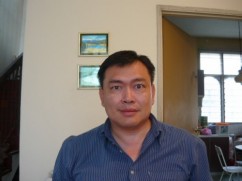
The Chinese lion dance is a performance not to be missed if you ever get the chance to see one. Chris Yip writes about this very traditional Chinese cultural dance in a walkthrough of its origins and story in Malaysia.
“Bang Bang Dong Dong Cheng Cheng! The mood is festive and colorful, there is the loud beat of drums, gongs, and heavy clanging of cymbals while the continuous mini ‘explosions’ of firecrackers crackle in the background. The colourful lion costume made up of a large horrendous yet impressive-looking head with large blinking eyes, and a body with a tail moves vigorously in exaggerated lion movements and behaviour with two dancers in them prancing around choreographically. A crowd surrounds the exciting spectacle while looking on with amusement and awe at the skill and prowess of the lion dancers entertaining them”.
This is a typical scene in Malaysia during Chinese festive celebrations or events where the Chinese lion dance is very much a part of the nation’s heritage of varied cultures. We take a walk through the story and history of the Chinese lion dance in Malaysia and its origins in China while also delving into its intricacies and components.
The History
The Chinese lion dance is very much intertwined throughout the history of old China and many other regions including South East Asia. Although having had initial influences from India and Iran, the Chinese lion dance is very much rooted in and a cultural symbol born of ancient Chinese folklore. It is a traditional dance which mimics the behavior or movements of the lion in a performance that involves a lion costume to bring good luck, prosperity, and to chase away evil spirits.
The Chinese lion dance throughout the world is usually performed during the Chinese New Year festival , and other Chinese traditional, cultural, and religious celebrations. But it is often performed also at business opening events, wedding ceremonies, auspicious celebrations, religious festivals, and also to honour important visitors by Chinese hosts. The Chinese lion dance can also involve two masked dancers or jokers who accompany the act and constantly provoke the lion as part of the performance and entertainment.
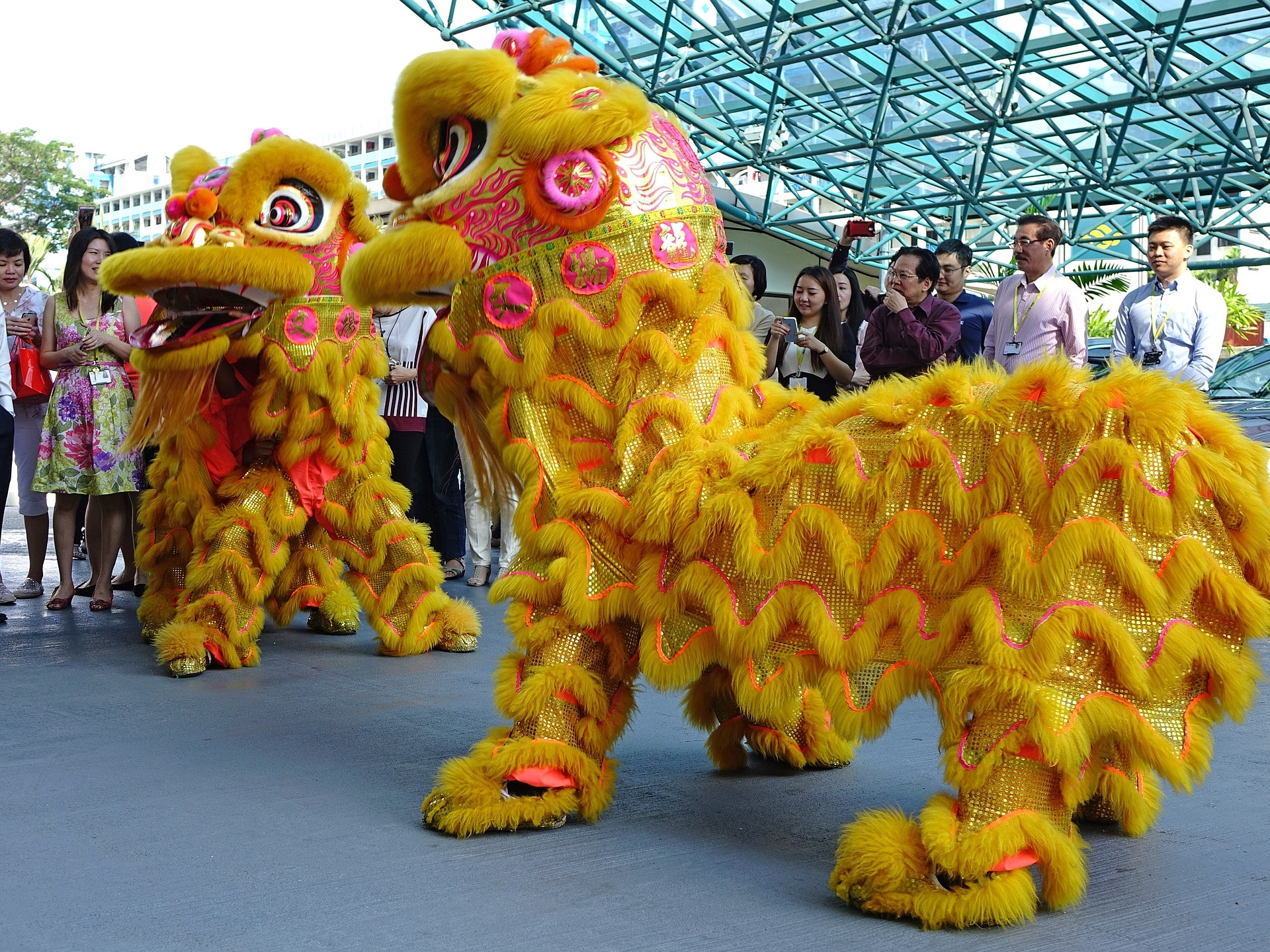
Its origin through a number of dynasties in China is filled with mysticism and legends mixed with history where its fundamental dance movements can be found in Chinese martial arts and civil acrobatics. It can be generalized into two basic forms, the Northern lion and the Southern lion dance. The Southern lion dance predominates in South East Asia, supported and propagated by Chinese migrants from Southern China like Guangdong province in that region.
It has three styles of influence – Hok San, Fut San, and Fut Hok – while various versions of both the Northern and Southern lion dance are found in Korea, Japan, Tibet, Vietnam and other countries. The Green Lion head is popular with the Hokkien people and Taiwanese besides the Muslim minority group of Shenqiu County in Henan who have their own style of the lion dance also.
In Malaysia, the culture of the Chinese lion dance was largely imported, in the nineteenth and twentieth century, into the region together with the mass migration of Chinese seeking their fortunes and a better life in this country fondly known to them then as the land of milk and honey.
Revival of the Dance
For a long time, the Chinese lion dance remained relatively dormant back then when this country was still called Malaya. There were few lion dances performed in those days as there were not many Chinese lion dance associations and troupes in existence in those times. But after the Second World War and the Emergency period , as the Chinese communities in the nation became wealthier and more culturally awakened there was a revival in interest in the Chinese lion dance.
Associations and youth movements were started where the training and practices of lion dancing was nurtured and promoted. A trend started in the 1960s to 1970s where dedicated old practitioners in this ancient cultural art trained young people, who otherwise would have remained unskilled and with little or no training, to become exponents of lion dancing. The Malaysian government during that era recognized and singled out the Chinese lion dance as a significant part of the Malaysian Chinese and national culture which helped boost and develop the art, its popularity, and the industry of this traditional dance.
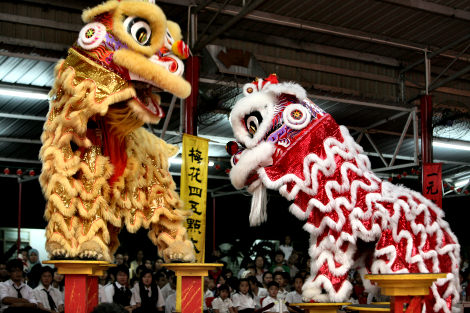
A few Chinese Malaysians began producing lion heads and costumes on their own instead of importing them from China which was rather expensive and difficult back in the 1970s and 1980s. A current well-known name in Chinese lion head construction is Siow Ho Phiew (62), a master craftsman in his trade as well as pioneer. The lion head normally is 9kg to 15kg in weight comprising mainly paper-mache material, bamboo, blinking eyes, and a mouth that snaps.
It is also adorned brilliantly with feathers, furs, mirror-glass, and glitter. Nowadays in Malaysia, troupes of lion dances from numerous associations can be seen quite often especially during the Chinese New Year festival season travelling from one venue to another in open trucks. They usually perform at individual homes, business premises, shopping complexes and hotels etc as part of the season’s celebrations.
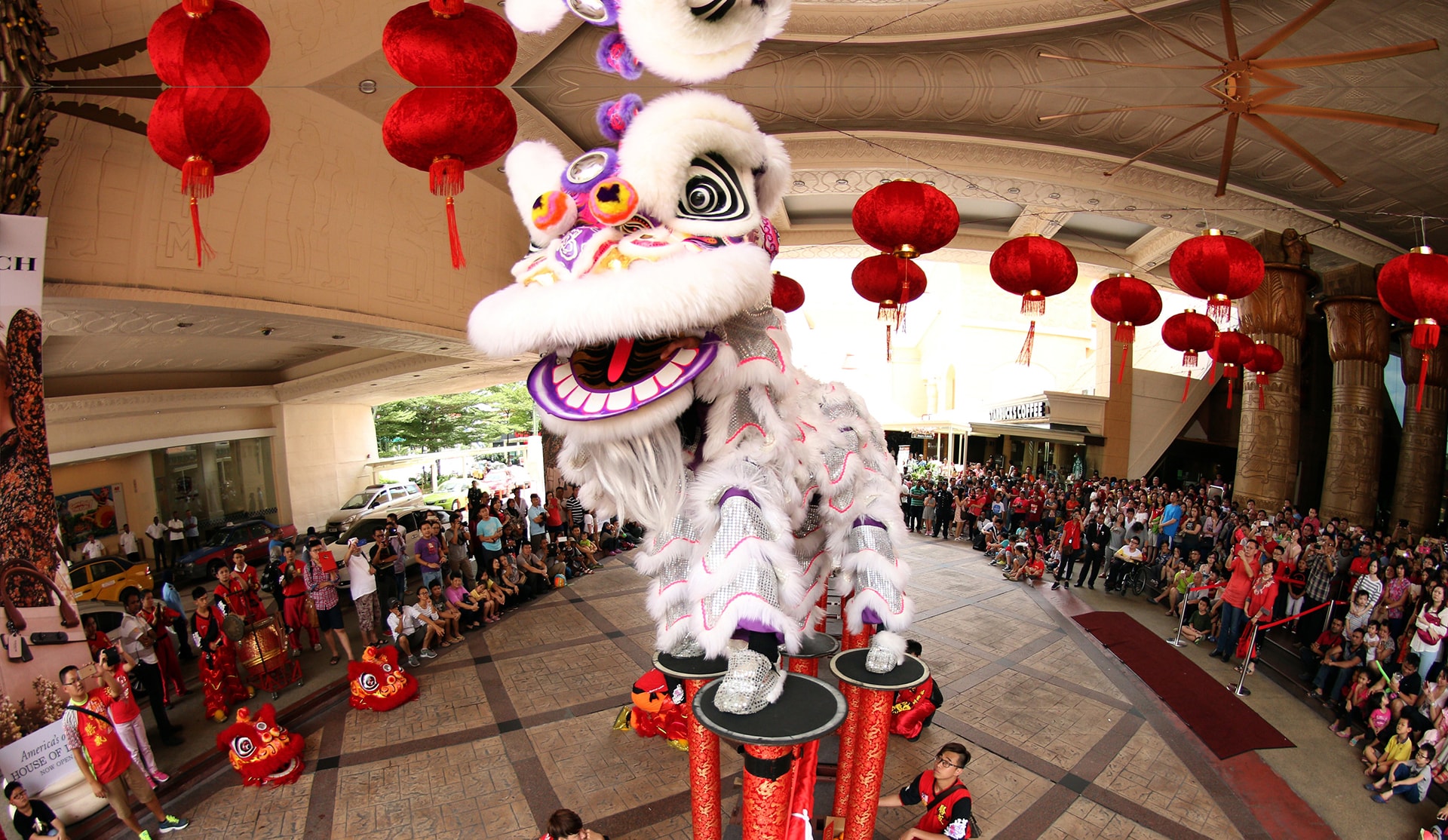
In the 1990s lion dance competitions started to be more frequent and popular locally which led to international lion dance competitions being birth in Malaysia. Other countries like Singapore, Taiwan, and Hong Kong followed suit where now the world championships in Chinese lion dance is held in Malaysia every two years. Called the Genting World Lion Dance Championships , this event has been won almost every time by a Malaysia troupe. Usually 21 poles or ‘Jongs’ are involved in competitions which normally can reach heights of 3 meters and even has reached heights of 6 meters in championships pioneered by the Malaysians.
And the good news is that Chinese New Year is just round the corner again and will be celebrated from February 16 to March 2 . It will be a time of joy, celebrations, family reunions, visitations of homes of families by relatives and friends. There will also be lots of delicious food for the foodies, numerous ‘Ang Pows’ (red packets of money) for the unmarried and kids, and lion dances and fireworks for those who appreciate culture and excitement!
Francis Liew
Most Popular

TEG Mingle Plus: Join us Poolside at Eastin Hotel!

First Thoughts on the Latest MM2H Programme Revision

Is Malaysia’s Tourism Tax Good Policy?

Burning Up the 5G Superhighway: Malaysia’s Speeds Are Second-Fastest in Asia Pacific

Calling All Expat Entreprenuers!

Here Comes the Year of the Dragon!

Langkawi Wraps Up the 20th Edition of Its International Regatta in Fine Fashion

Refresh Your Music with Heineken!

Chinese Lion Dance
Chinese Lion Dance The lion dance is a traditional dance performed in the Chinese culture. The performers mimic the moves of the lion inside a costume that looks in a way like a lion. Many people who are not very familiar with the Lion Dance often gets it confused with the Dragon Dance, since both are performed, for the most part, for the same occasions. It is simple to tell the two dances apart. The Lion Dance is performed most of the time with only two people. The Dragon Dance is performed with many people. In the Dragon Dance multiple people are inside the dragon costume holding up poles, whereas in the Lion Dance, there is someone holding the head of the lion and another person in the back of the lion costume acting as a rear of the …show more content…
The nose of the lions is usually a green color. Green symbolizes good luck, prosperity, and the “influence of heaven.” Attached to the forehead of the lion is a mirror. The mirror is said to scare away evil spirits by reflecting their own image against them, and also the ability to travel between heaven and earth. The costumes of the lions used for Chinese Lion Dance can only be custom made in specialty craft shops in rural parts of China and have to be imported at considerable expense for foreign countries outside Asia. For groups in Western countries, such as the United States, is made possible through funds raised through subscriptions and pledges made by members of local cultural and business societies. Special hand-made costumes with different add-ons can run up to 2000 dollars on some websites. Some countries, like Malaysia for example, has a really big Chinese population. As a result, local expertise may be available in making the lion costumes and musical instruments without having to get them imported from China. The head of the lion contains a symbol of many different animals itself. The horn is shaped like a bird for the phoenix, symbol for life and regeneration, also associated with representing the female element. The ears and the tail are shaped like a mystical creature, the Chinese unicorn, representing wisdom and good luck. The spine represents the snake, charm and wealth. The back hump
The Secret Lion Symbolism
While the true meaning of the lion is never specified one can use the experiences and events that the narrator describes and reasonably believe that the lion is a representation and symbol of growing up and the process of puberty. As the story progresses the narrator describes different events of his childhood when the process of growing up is evident. Such as the time when the narrator and his friend discovered a perfectly round stone ball, which they later would learn is a grinding ball. However, for the time being they saw this ball as near perfection and were in awe of the sheer flawlessness of this stone ball. This event shows the childish innocence that they had in the belief that the ball was naturally perfect. The problem they faced was the fact that they felt that they could not tell anyone about their discovery because it too might be taken away. So they hide the ball down by the river. It was their little secret, a secret that fascinated them but also confused them at the same time. A secret that they did not understand but could not get away from. It was much like their secret lion. Although the time of which they learned of its true meaning is not specified this fact that they did learn of its true purpose is evidence that supports their childish innocence could not last much against the current of the ever changing
Lord Of The Flies Beast Quotes
“Maybe there is a beast… maybe it's only us,.” said William Golding, Lord of the Flies. When a symbol is examined, many conclusions can be drawn by relating the symbol to society and real life. In the novel Lord of the Flies by William Golding, even though the beast does represent something one can hurt or kill, as a symbol it represents a larger concept or idea because it brings out the beast-like personalities of the boys on the island, illustrates Jack’s dominant personality, and portrays the personalities inside all of us which humans can never defeat.
Assess Whether Pericles Was a Good or Bad Leader
Other symbolic attributes for a lion are strength, courage, power, royalty, dignity, authority, dominion, justice, wisdom and ferocity which I believe are all attributes displayed by Pericles in both his political and military career. Ancient Greek symbolism for a lion is the protector of the home and Pericles really showed that in the battles protecting his beloved home, Athens.
Monsters in Greek Mythology Essay
- 6 Works Cited
Probably some of the most fearsome and violent monsters contain characteristics of a lion. A prime example is the Nemean lion. This lion was vicious and could not be hurt by bronze or stone. Since the lion is a very powerful and fierce animal, this monster is especially feared because it is partially lion and invincible to weapons. The Griffin is another ferocious monster that has the body of a lion but the head and wings of an eagle. It is especially known to guard treasure. It is a mix of the lion, the king of beast, and the eagle, king of birds, so it was very powerful. In general, monsters with lion characteristics are very powerful and feared.
lion king the musical Essay
Shadows which can make an object seem larger than it really is and make something scarier than it really is are a major part of this musical. Originated either in Greece or China this now Indonesian form of puppetry is called the wayang kulit and uses flat puppets made of wood and animal hide against a muslin screen. In The Lion King, shadows are used to portray many animals or ones that seem frightening. This wonderful combination of puppets masks and real people makes this a most wonderful sight. There are certain themes that are portrayed such as listen, remember, and learn as they teach us to be part of “the Circle of Life,” remember who we are and where we came from,
Examples Of Adversity In Stootan
Lion will always try to go the extra mile to get his way, no matter what it takes. An example of this is shown on page 34 of the book; “Once when one of the guys who cleans the tables in the cafeteria told him he couldn’t be taking food off the premises, Lion told him it was okay, that he had been one of the three athletes in the nation who’d been awarded athletic scholarships to high school, and that there was an ‘all you can eat’ clause in
The Great Sphinx Research Paper
What has a body of a lion and a face of a man? Well, the answer is… THE GREAT SPHINX!!! It is a pyramid in Egypt that holds a pharaoh’s (a ruler’s) body in it. Scientists believe that it is older than Jesus but no one really knows when it was built.
Music Appreciation: Native American Eagle Dance
The Eagle Dance is a traditional Native American dance that is widely found on the current powwow circuit. The overall rhythm is both repetitive and one with a changing pattern. The rhythm of the drum is also mostly repetitive, but at the points when the action of dance increases so too does the rhythm. The text of the Eagle Dance is a traditional chant of the Native American culture. In the beginning of this chant the voices are following a free rhythm, the voices are moving with the pulsation of the drum beating. As the chanting continues the voices move to a more bold tone with the drums at the same beat. In most traditional Native American music the texture
Derrick Hirst's End Game
I think the author was trying to emphasize a war of some kind, I came to this conclusion based on the representation of the animals where they are seen as strong, powerful, and strong. However, only the lion is seen as a wild animal, as horses are seen as a symbol of high class. It seems like two noble high powers were at war however the wild and crazy always win because they think of the
Essay about Monsters
A prime example is the Nemean lion, which Heracles defeated as his first labor. It was fierce and could not be hurt by bronze or stone. It shows its power with violence and physical superiority. The Griffin is another ferocious monster that has the body of a lion but the head and wings of an eagle. It is mostly known to guard treasure. It is a mix of the lion, the king of beast, and the eagle, king of birds, so it was extremely dominant. Finally, the Sphinx was a lion with a human head. It guarded the gates to the Greek city of Thebes. When a visitor wanted into the city, the Sphinx would ask them to solve his riddle. Thus, the Sphinx never used violence to guard the entrance. People wishing to enter the city knew of his power and physical capabilities. So even though the Sphinx never used violence, people knew of its strength and power anyway because he was partially lion. All in all, monsters with lion characteristics are very powerful and feared.
Descriptive Essay On Lion
Without a doubt, lions have strong physical qualities. One, in particular, is the lions’ amazingly strong forepaws. So strong and powerful that a lion could kill a hyena in just one blow. Also, a lion’s muscular body has less bone mass compared to the other animals, which makes it responsible for its graceful movements. Each of their paws is equipped with soft pads, making them soundless as they move. A lions’ eyes are well-adapted in low light, an advantage for them to go hunting at night. A
Life Of Pi Symbolism Essay
One of the biggest parts of the symbolism is the tiger, Richard Parker. He could be compared with many things, but I like to compare Richard Parker to Pi himself, with Richard Parker being a direct link to Pi’s sanity and wellbeing. Hindu belief includes the transferring of the soul to new bodies, and I think that perhaps Richard Parker is Pi’s soul, reincarnated into the form of a tiger. What better to symbolize Pi than a tiger? Tigers live in harsh environments that hold no remorse for them, as does Pi, living in the harsh waters of the Pacific Ocean for two hundred and twenty seven days. As it is not real reincarnation being depicted in the novel, as they both exist at the same time, it can still be used as a representation of reincarnation. The other animals the beginning may also symbolize other objects. I think that the other animals may symbolize the conflicting emotions inside of Pi. The hyena, the part of Pi that wanted to eat the other animals for food. The zebra, symbolizing the hurt part of Pi, wanting to give up. The orangutan, the part of him that wanted to defend himself and the other animals from the
The True Meaning of Dante´s Inferno Essay
- 1 Works Cited
The lion represents the sin of violence. Dante describes the lion as approaching with a ravenous hunger. Even the air was afraid of the lion. Dante choose the lion to represent violence because they are known as the kings of the jungle. Their powerful legs and long teeth allow them to quickly take down and kill their prey. Male lions contain pride that causes them to violently fight to remain the head of their pack. This violent behavior can be found in the seventh layer of hell where the tyrants, killers, and war hungry sinners reside.
The Form Of Dance In The Chinese Lion Dance
The overall form that is used in the Chinese Lion Dance music is in the form of Rondo. Actually from the performances we can hear that the music in all the parts are different but there is only one part that we usually will remember. Every different parts represents different motion and meaning of the emotions of the lion and the actions that the lion is doing.
Argumentative Essay On Why Lions Are Feared
Many anmals have different ways on survivng on this planet. Lions are animals that are feared. When a lion is hungry they don't just got to a McDonalds and order a burger. They hunt for food. They're tactical and quick. For example, a gazele is walking around minding its own business. But, what it doesn't know that a lion is stalking it waiting for the right time to leap out and attack. A lion can hunt at anytime of the day because they have night vision where it can see both during the day and during the night. A lion must find its mate to reprouce. When they do reproduce they have cubs, and they take care of their cubs until its old enough to hunt and live its own life. Even though a lion is feared it still has to survive because other animals,
Related Topics
- The Lion King
- Greek mythology

ESSAY SAUCE
FOR STUDENTS : ALL THE INGREDIENTS OF A GOOD ESSAY
Essay: Lion Dance: An Ancient Chinese Performance Art of Prosperity and Fortune
Essay details and download:.
- Subject area(s): Essay examples
- Reading time: 6 minutes
- Price: Free download
- Published: 26 February 2023*
- File format: Text
- Words: 1,569 (approx)
- Number of pages: 7 (approx)
Text preview of this essay:
This page of the essay has 1,569 words. Download the full version above.
Lion dance, a prominent cultural performing arts in Singapore, breathes life into the lion costume. The bright colours of the lion as it jumps with precision and agility to the beat of the loud banging coming from the Chinese instruments.
Lion dance is an old tradition in China dating back from the Tang Dynasty, which was around the 618 AD – 907 AD (though another story differs from this). Many stories and folklore shrouds the creation of the Lion Costume, the purpose however remains as for prosperity and fortune. The creation of the Lion Costume was to chase away bad fortune and bring in good fortune. Lion Costume are move along with chinese martial arts to further the cultural heritage. Although the story of how the lion costume was created has a controversy as of how it came about. The controversy around it was that there were no lions in the Asia region. The tradition was distributed by the chinese when they move from China to other part of the world.
Who designed it?
One of the most famous story, during the eve of the lunar new year, a beast would appear in a village in China. It leaves a trail of destruction from crops to animals belonging to the village's farmers. The beast was mystery to the village, therefore a name was given to it, Nian, which translates to “year” in Chinese.
The villagers came together to brainstorm on how to stop the ferocious Nian. The villagers discovered that the Nian has a fear of lions, then decided to create a lion out of bamboo and cloth. The night before the lunar new year, the villagers gathered to scare the Nian away with the lion they made, while creating loud piercing noises from pots and pans. The frightened Nian fled from the village and the success story became a tradition ever since. Every lunar new year from then, the people will perform the lion dance accompanied by chinese instruments which includes the drums, cymbals and gongs.
Another popular belief, the Emperor Wen of the Han [during the North and South Dynasties (420–589 CE)] ordered Tan He, the governor of Jiao Zhou, to invade the territory of Lin-yi. Lin-yi's soldiers overpowers Tan He's soldiers with long spears and elephants, while Tan He's soldier had no animals to ride into battle. With Lin-yi's army having the upper hand, Tan He has to come up with a strategy to fulfil Emperor Wen orders. His strategy consist of getting his soldiers to don on cloth and ropes making themselves closely like lions to leave the elephants frightened. The strategy succeed, making the lion dance a performance in the military then a chinese tradition.
Both of its origin story does not show how the lion came about as there were no lions in China. Hence, design has been a big part of China history, with creation of an animal they have never seen but what they believe it would look to be. Now the design of the lion is seen everywhere especially in asian countries with the help of globalisation.
The design of the lion costume is created by the mainland chinese of more than a thousand years ago. The history artifact of the time (Han Dynasty and Tang Dynasty), like paintings as such, helps distinguish how the modern lion costume design is closely related to the art style of the time with many similarities. The attire of Emperor Wen of the Han in paintings shows the same design as the head of the lion costume. With heavenly bells hanging from the top of the head, gold and red lining.
This design relates to the paintings throughout each dynasty, changing the design of the lion ever so slightly to what we have of the modern age.
Stylistic Analysis
The performance requires one to control the movement of the head from the blinking of each eye to the action of the mouth and how the front legs acts, while the other will act as the body and hind legs. Coordinating the dance between the two, with a lion head of about 2 kg and a long cloth for the body. The head consist of a the heavenly bell, eyes and eyelids, nose, mouth, ears and horn. The body consist of a long cloth and the tail ending. Each of the body part represent different meanings after Dian Jing which translates to "dotting of the eyes" in chinese. This tradition is required to be performed by a person of a sort of social standing before the lion dance. The animation of the lion commence after dotting on the eight areas followed with these phrase:
Heavenly bell: “Excellence for all ages”
Eyes: “Vision bright and clear”
Nose: “Energy flows”
Mouth: “Roar in all directions”
Ears: “Hear up to 10,000 li”
Horn: “Tower of strength”
Body: “The gods reside”
Tail: “Inexhaustible might”
The head used to consist of a red bow on its horn but modern day lion costume does not include it. Silk balls and bells are often seen erected from the head, with large round eyes and eyelids which can move independently. The fur of the costume is often made from wool or rabbit fur and rarely of synthetic material. The head of the lion is abnormally larger than the body, accompanied by bright and vibrant colours or a black fur with bright contrasting skin. The mouth of the lion consist of its teeth and tongue, with a long beard hanging down from the bottom of the mouth.
Aside from spectacular acrobatic stances by the lion, the performers’ coordination in bringing life-like movements to the lion adds to the success of the dance.13 A troupe of musicians accompanies the lion dancers, playing cymbals, gongs and drums.14 Every gesture, from the lifting of a leg to the fluttering of an eyelid, is choreographed to a particular beat in the music. Up to eight different stances are performed: happiness, anger, fright, merry-making, suspicion, drunkenness, sleep and wakefulness.15
The performance include a series of agile act that has chinese martial art influences. The lion would often open up a pomelo or lettuce and arranging them into the word Fu translating to prosperity in chinese. Lion dance in Singapore is often practiced by men from a young age, though even girls are picking up on this cultural art. The two style of lion dance differs from Northern and Southern lion dance, both of which have different appearance and performance style.
Northern lion dance
The northern lion has a golden and red fur appearance, performing stunts with another performer dressed as a warrior, these performance includes balancing on balls, see-saws and jumping from one point to another.
Southern lion dance
The southern lion dance is more prominent in Singapore. It first started out in Guangdong, China, the lion is often involved in climbing or jumping to retrieve a whole lettuce way above ground (even up to three storeys high). This is usually achieved with acrobatic skills or the use of poles.
The southern lion's head are in bright vibrant colours. Its body is often striped, which just as covers the top of the performers, this way it does not hinder their movements. The costume is mainly covered in thick red or golden fur, only exposing the performers' legs. The performers would wear pants and boots of similar to the lion's design.
The southern lion's is often designed to be of a famous chinese historical character from the three kingdoms era. These characters consist of the generals like Liu Bei, Guan Yu, Zhang Fei, Zhao Yun and Huang Zhong.
A lion head of orange or with five different colours represents Liu Bei.
A lion head of red colour represents Guan Yu.
A lion head of black colour represents Zhang Fei.
A lion head of green represents Zhao Yun.
A lion head of yellow represents Huang Zhong
Inspiration
The lion are inspired by the era of its creation, from how the lion looks in the painting of the times, to how the colour and influence of the fashions style of the time.
The lion costume travelled from China to many parts of the world with its people. The chinese citizen in Singapore often hires the lion dance troupes to perform during the lunar new year and business grand opening. The belief behind is to ward off bad fortune, allowing good fortune to come in and bring in prosperity. With globalization, chinese business that ventures out to different country will often be celebrated with lion dance performance.
We can learn from the design history of China to how different cultural can be brought with transnationlism. As a culture is not always taken away with development of a country. One of the many is an artifact like? If we were to compare to…
How does it relate to design movements or styles i know?
The lion costume has been influenced by different eras of the three kingdoms, though not much has changed. It retains the same features and style, the performance is ever changing. The western art style has not influence the lion costume over the years and even with globalisation, the lion dance will travel the around the world without changes by western culture.
Transnationalism did not take away the culture of lion dance but instead created more awareness by having it enter different countries and influencing different cultures.
...(download the rest of the essay above)
About this essay:
If you use part of this page in your own work, you need to provide a citation, as follows:
Essay Sauce, Lion Dance: An Ancient Chinese Performance Art of Prosperity and Fortune . Available from:<https://www.essaysauce.com/essay-examples/2018-11-14-1542162106/> [Accessed 13-04-24].
These Essay examples have been submitted to us by students in order to help you with your studies.
* This essay may have been previously published on Essay.uk.com at an earlier date.
Essay Categories:
- Accounting essays
- Architecture essays
- Business essays
- Computer science essays
- Criminology essays
- Economics essays
- Education essays
- Engineering essays
- English language essays
- Environmental studies essays
- Essay examples
- Finance essays
- Geography essays
- Health essays
- History essays
- Hospitality and tourism essays
- Human rights essays
- Information technology essays
- International relations
- Leadership essays
- Linguistics essays
- Literature essays
- Management essays
- Marketing essays
- Mathematics essays
- Media essays
- Medicine essays
- Military essays
- Miscellaneous essays
- Music Essays
- Nursing essays
- Philosophy essays
- Photography and arts essays
- Politics essays
- Project management essays
- Psychology essays
- Religious studies and theology essays
- Sample essays
- Science essays
- Social work essays
- Sociology essays
- Sports essays
- Types of essay
- Zoology essays

Vietnam Tourist Service
- Culture and traditions
Vietnamese unicorn and lion dances
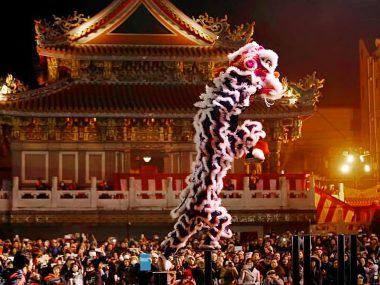
The unicorn dance (múa Lân) and the lion dance (múa Sư Tử) look very similar for the observer. Even the Vietnamese can not always correctly distinguish one dance from another. However, there is an important difference in the costumes of the characters: lions never have horns. Unicorns can have a horn in the middle of the head, or go without it.
One person performs the movements of the head of a unicorn (or lion), the other, covered with an embroidered cloth with a fringe, symbolizes the body of the animal.
Table of Contents
The unicorn and the lion are talismans of peace and security.
In the traditional worldview of the Vietnamese people, the unicorn is one of the four sacred talismans, along with the fish, the grus and the lion (or tiger). In religious institutions (temples, palaces, tombs and shrines) of Vietnam, the image of a ferocious lion, baring its fangs and rolling its eyes, is found often. These lions are symbols of the power that governs the universe. According to myths, evil spirits simply have no chance if confronting them.
The unicorn, like the dragon, is a mythical, nonexistent animal. The people created the image of a unicorn, a horse with a lion’s head. In Four Noble Truths, the unicorn is regarded as a symbol of peaceful desires, living in harmony with everyone.
The unicorn and the lion belong to two different worlds. The unicorn is imaginary, invisible, and the lion is real and tangible. Although the lion is known as the king of beasts, we understand, that if it is a symbol of power (so powerful that it can cast out evil spirits), people would choose it as their protector. While the unicorn is a symbol of peaceful desires, the lion is the warlike lord of the jungle. That’s why, to glorify the idea of national security, the Eastern culture has invented the lion dance. In peacetime, the unicorn often dances.
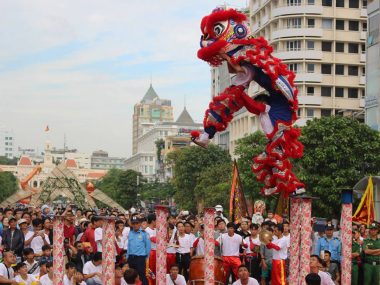
The legend of the origin of the lion dance.
Lion dance came to Vietnam from China.
The legend of the origin of the lion dance is associated with the confrontation of Chinese dynasties in the 5th century. The story goes that in 466, the Emperor of the Northern dynasties of China Wen of Sui attacked the southern army, which used war elephants to repel the enemy. This formidable force prevented the northerners from winning for two battles and they were looking for a way to neutralize the elephants. Then the wise commander suggested that elephants would certainly be afraid of lions. Since these animals had never lived in China, they decided to make dummies out of paper and fabric with wide toothy mouths. Soldiers climbed into the lion’s skins made of cloth and set the structure in motion two by two.
On the decisive day, the “lions” lurked in the bushes, and on the battlefield, the troops placed pit traps for elephants. When the “lions” suddenly jumped out during the battle, the elephants fled in terror, throwing off their riders and crushing their own troops with their feet, falling into the camouflaged pits. Therefore, the southern Imperial troops defeated the enemy from the North, and the lion dance became a part of court festivities.
Street lion and unicorn dances.
In folklore, the unicorn and lion dances have two forms.
There are two forms of unicorn (lion) dance:
- Two people climbing into the «skin» of the animal and dancing one as the head and front legs, and the other as the hind legs perform the dance.
- When the head of the animal is mounted on a stick, the dancer carries it as a banner. A red cloth with large black hieroglyphic inscriptions is attached to the stick. The fabric symbolizes the body of an animal. It’s often an acrobatic performance. The participants perform spectacular stunts, standing on each other’s shoulders and moving so at the height of special columns-pedestals 2 meters or more in height. The stunts are performed, for example, by kung fu students.
Dances are accompanied by rhythmic drumbeats. Often, other dance participants carry colorful paper lanterns and five-color flags.
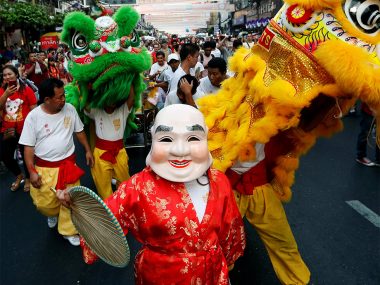
At all the festivals the dancers in the costumes of the lion or the unicorn go by the streets, entering houses, cafes and shops. And everyone makes offerings for them (in cash). Sometimes, the owners put the offerings on a high bamboo stick, then the dancers perform acrobatic tricks, imitating a living tower with the head of an animal, which swallows the gifts. Sometimes, such entertainment turns into a competition of teams of dancers and, the more worthy the award, the higher the level of skill is required to get it.
Getting the offerings is not the final goal for the dancers. Their goal is to go to the houses and welcome the holiday, bow to the elderly, entertain children. As you may already know, the Vietnamese are very cheerful and they like to have fun. Lions and dragon dances are popular entertainments.
There are many kinds of unicorn (lion) dances. The teams with one unicorn or a lion perform a rhythmic dance with jumps in height and the forming of the pyramids. The dances of two unicorns symbolize the interaction of Yin and Yang, the harmony of the male and female. The three unicorns in the dance, dressed in three colors, red, black and yellow, symbolize brotherly love and prayer for virtue between people. When four unicorns dance together (white, yellow, red, black or blue unicorn or lion), they symbolize the four seasons, the four sides of the world and the four elements, expressing the fullness of the universe.
The unicorn or lion dances are not only performed during big national holidays like the New Year, but also on birthdays of the rich, the opening of cafes, hotels, even bank branches.
If you ever visit Vietnam, we hope you could meet your lucky unicorns or lions.
More about culture of Vietnam Calculate tour to Vietnam
Written by Dima-tour on 12/15/2019 . Posted in Culture and traditions

English - Vietnamese phrasebook

Follow Eater SF online:
- Follow Eater SF on Twitter
- Follow Eater SF on Facebook
- Follow Eater SF on Youtube
- Follow Eater SF on Instagram
Site search
- Los Angeles
- New Orleans
- Philadelphia
- Portland, OR
- San Francisco
- Twin Cities
- Washington DC
- Neighborhoods
Filed under:
- San Francisco Restaurant Closings
James Beard Award-Recognized Vegan Restaurant Lion Dance Cafe Is Closing
Lion Dance Cafe received praise from the James Beard Foundation and publications across the country. The business will shutter its 17th Street location on April 27.
Share this story
- Share this on Facebook
- Share this on Twitter
- Share All sharing options
Share All sharing options for: James Beard Award-Recognized Vegan Restaurant Lion Dance Cafe Is Closing
/cdn.vox-cdn.com/uploads/chorus_image/image/73256193/PhotoEmmaKMorris_2082.7.jpg)
Here comes another major loss for plant-based eaters in the Bay Area. Lion Dance Cafe , which became a destination for fans of Singaporean and Italian cuisines and those with a penchant for vegan food, will close on April 27. In an Instagram post, the owners let fans know the ride is over, at least for now. “It’s been challenging. And it’s been sweet and rewarding,” the post reads. “Thank you all for filling our restaurant and hearts with so much life.”
Over its 12 years in the Bay Area, owners Shane Stanbridge and C-Y Chia made Lion Dance Cafe a mashed-up, decadent home for legions of diners. The post’s caption says the reason for the closure was “familial.” But Chia and Stanbridge were not immediately available for comment. This article will be updated as Eater SF learns more.
The future of the business remains unclear as the post indicates things aren’t over for good. Chia and Stanbridge’s accompanying business, S+M Vegan, was renamed Storm Now Creative on the same day of the closure announcement.
Lion Dance Cafe opened its permanent location in the thick of the COVID pandemic’s worst days, only hiring employees for the first time in 2021 after opening in September 2020. Throughout its tenure as a pop-up — which kicked off formally in 2013 — and physical restaurant, Lion Dance Cafe changed course and pivoted countless times, operating as a catering business, a take-out window, a sit-down restaurant, and a pop-up.
Most recently, the business gained the attention of the James Beard Foundation. Stanbridge and Chia were both named semifinalists for the Best Chef: California award this year. “Of course, we’re immensely grateful people are noticing,” Chia told Eater SF in early 2024. “But for us we’re always in it, trying to make things work, so we never take a step back and say, ‘This is how things feel.’ We’re always in the middle of it.”
:no_upscale()/cdn.vox-cdn.com/uploads/chorus_asset/file/25268815/910079B8_6B41_4518_A89A_336132FD8088.jpg)
More From Eater SF
Sign up for the newsletter eater sf.
Sign up for our newsletter.
Thanks for signing up!
Check your inbox for a welcome email.
Oops. Something went wrong. Please enter a valid email and try again.
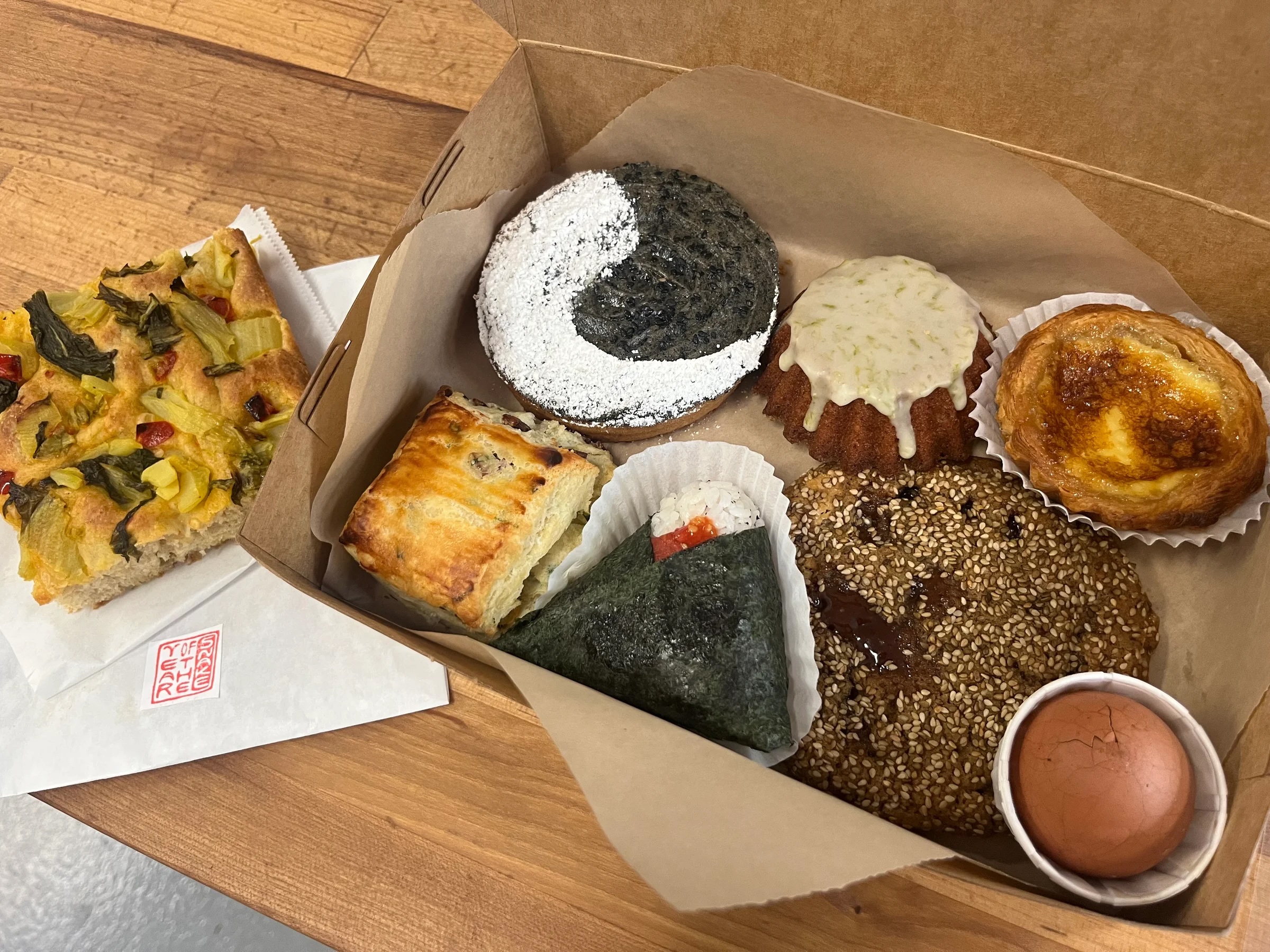
4 Restaurants and Bars to Try This Weekend in the Bay Area: April 12

Popular Japanese Restaurant Kuma Nori Is Closing in 2026

A Philz Coffee in Berkeley Just Became the First Shop to Unionize

You Can Finally Eat at Petit Crenn Again — For Now

Luxe Downtown Oakland Sports Bar Mushin Closes Permanently

This Michelin-Starred Restaurant Is Resurrecting the Former Dean & DeLuca Space in Napa Valley
- Share full article
Advertisement
Supported by
Salman Rushdie Is Again the Toast of Literary Manhattan
Nearly two years after he was stabbed, he was in fine form as he greeted his fellow writers at a party celebrating his candid memoir, “Knife.”

By Alex Vadukul
Three security guards stood along a leafy street in the West Village of Manhattan on Thursday evening, watching as a procession of writers, editors and publishing industry veterans entered the Waverly Inn restaurant for a book party.
The security team was present because this wasn’t just any book party.
It was a gathering for the release of “Knife: Meditations After an Attempted Murder,” a new memoir by Salman Rushdie, in which he examines how his life was altered by a violent stabbing nearly two years ago, when he was attacked onstage at the Chautauqua Institution in western New York.
The episode temporarily placed Mr. Rushdie on a ventilator and left him blind in his right eye. (The suspect, Hadi Matar , has pleaded not guilty to charges of attempted murder and assault.)
When Mr. Rushdie, 76, arrived in the Waverly Inn’s garden, friends and fellow writers hugged him. He wore a pink shirt, a blazer and a pair of eyeglasses with a black-tinted right lens. His wife, the poet Rachel Eliza Griffiths , stood at his side.
The room filled with literary power players, including the agent Andrew Wylie , the writer Marlon James and the editor Graydon Carter, whose digital publication, Air Mail , hosted the event.
The actor and singer Tony Danza was also there for Mr. Rushdie.
“The writing process is catharsis,” Mr. Danza said. “If Salman is using this book to process the horrible thing that happened to him, that takes guts.”
The memoir is under a strict embargo, so there were no copies of the book at the party. And because Anderson Cooper has conducted an interview with Mr. Rushdie set to air on “60 Minutes” on Sunday, he wasn’t fielding many questions from journalists. But he did take a moment to describe why he had decided to write a memoir in the wake of the attack, rather than another novel.
“Well, I tried to write other things afterward, but they were all nonsense,” Mr. Rushdie said. “So I decided that I finally had to pay attention to the elephant in the room.”
The attempt on his life came more than three decades after the leader of Iran, Ayatollah Ruhollah Khomeini , issued a fatwa calling for Mr. Rushdie’s death after the publication of his novel “The Satanic Verses,” which fictionalized parts of the life of the Prophet Muhammad and included depictions that many Muslims considered blasphemous. Major book chains refused to stock the book for a time, and Mr. Rushdie lived in hiding for nearly a decade .
At the party, Gay Talese recalled how, after the fatwa was issued in 1989, writers including himself, Norman Mailer and Susan Sontag participated in a PEN America public reading of selections from “The Satanic Verses” to support him.
“Me and Mailer and Sontag, we wondered if we were going to be shot,” Mr. Talese said. “The question was whether there would be someone in the audience who would avenge further for the Ayatollah.”
“Thirty years of being a marked man of letters, can you imagine living like that?” Mr. Talese added. “I’d only hope to have the same kind of grace that Salman has living with such a circumstance. For a man afflicted with such tragedy and disturbance in his life, he’s still such a cheerful guy.”
Indeed, as the book party got going, Mr. Rushdie seemed in touch with his inner social butterfly. While he made the rounds, guests commented on how his recent trauma hadn’t diminished his reputation as a social literary lion.
Nursing a margarita with a salted rim, the author Gary Shteyngart said that Mr. Rushdie looked undaunted. “Anytime you go to a good party now, there he is, still out there, and God bless him for that,” he said. “It’s a big screw you to anyone out there who would imagine doing something to him.”
Molly Jong-Fast , the writer and political commentator, reminisced about encountering Mr. Rushdie while out and about in London years ago.
“I remember being at parties as a teen in London in the 1990s, and I’d always see him, and I’d think, ‘Wait, doesn’t half the world want to kill this guy right now?’” Ms. Jong-Fast said. “I always thought he was a badass.”
The room grew rowdier as the evening progressed, resembling the gin-soaked Manhattan book parties of old, minus the cigarette smoke. Amid the crowd were also young stars of the city’s literary scene, like Kiara Barrow, a cofounding editor of The Drift , and Karah Preiss , who started the Instagram book club Belletrist with Emma Roberts.
When the party finally died down, guests headed out into a nighttime drizzle. Mr. Rushdie stayed behind to have dinner with friends. His security team kept watch while they ate in an adjacent red leather booth.
The writer Sloane Crosley , a longtime friend of Mr. Rushdie, said that she was glad to see him in such good form. But she remembered when his health seemed more precarious months after the attack, during an intimate gathering celebrating the release of his novel “Victory City.”
“I saw him when he made this appearance not that long after it all happened, but even then he still had his wit and grace,” Ms. Crosley said. “I went up to hug him, but I was nervous, and I didn’t want to squeeze him too hard. I remember he told me, ‘What’s the point of it all if you can’t squeeze too hard?’”
Alex Vadukul is a features writer for the Styles section of The Times, specializing in stories about New York City. More about Alex Vadukul
Explore Our Style Coverage
The latest in fashion, trends, love and more..
How ‘Carefluencers’ Got Big: On TikTok and Instagram, people are sharing what it’s like to take care of relatives who have reached their final years .
The Buzz on Boat Shoes: The category of footwear created when Franklin D. Roosevelt was president is being reinterpreted and rediscovered.
Are You a ‘Spring’ or a ‘Winter’?: Seasonal color analysis, a fad from the 1980s seeking to identify a person’s most flattering color palette, is drawing views and exasperation on TikTok.
Barbie, the Book: A bookstore event for the newly published “Barbie: The World Tour” brought out the die-hards.
Loving Sticks: Those who appreciate “ something as basic as a stick ” are sharing their enthusiasm through a newly popular Instagram account.
What Happened to the Wrap Dress?: A pandemic, the demise of “girlboss” culture and new values around what’s “flattering” have made the classic design seem outdated to some .

IMAGES
VIDEO
COMMENTS
The Lion Dance is an ancient Chinese cultural dance that has evolved since its creation more than a thousand years ago during the Han dynasty. It involves the performance of moves and actions that mimic the behavior of lions while wearing costumes created to appear like lions. The dance is mainly used for social purposes during traditional and ...
Lion dance. In Chinese culture, the lion symbolizes power, wisdom, and superiority. People perform lion dances at Chinese festivals or big occasions to bring good fortune and chase away evil spirits. The lion dance is one of the most important traditions at Chinese New Year. It is performed to bring prosperity and good luck for the upcoming year.
Lion dance (Simplified Chinese: 舞狮; Traditional Chinese: 舞獅; pinyin: wǔshī) is a form of traditional dance in Chinese culture, in which performers in a colorful, articulate lion costume create a ritualized and stylized dance for entertainment and spiritual purposes. The history of the lion dance goes back thousands of years, and many folk tales seek to explain its origin.
The Chinese Lion Dance is a traditional performance with a rich history and cultural significance. Originating from ancient China, it symbolizes good luck, prosperity, and warding off evil spirits. The dance is performed in various styles, each with its own unique movements and characteristics. Etiquettes such as respecting the lion and interacting with the performers add to the authenticity ...
Lion dance (traditional Chinese: 舞獅; simplified Chinese: 舞狮; pinyin: wǔshī) is a form of traditional dance in Chinese culture and other Asian countries in which performers mimic a lion's movements in a lion costume to bring good luck and fortune. The lion dance is usually performed during the Chinese New Year and other traditional, cultural and religious festivals.
Essay, Pages 2 (391 words) Views. 1363. The Lion Dance is among the most popular dances in China. Called the king of animals, the lion is a standard symbol of all the best in China. The dance has a long history extending back 2000 years. Records reveal that during the Tang Dynasty (618-907), the Lion Dance was currently performed for the royal ...
The commitment of lion dancers to their craft is astounding, and I want to draw attention to the people inside the performance, people who dedicate a significant part of their lives to this tradition.
Peter Khem, of San Diego Legendary Lion Dance Association, drums at a lion dance on Jan. 21, 2024. The head of the lion can be extremely expressive as the dancer operates strings and levers to ...
The lion dance is popular with ethnic Chinese communities worldwide during Lunar New Year and performances are highly interactive. Here a dancer from a Bangkok troupe collects tips the audience ...
Lions also play an important role in Buddhist mythology, which began spreading throughout China in the late Han Dynasty. 2. The lion dance is over 1000 years old. One Hundred Children Playing in ...
Both are dance majors at the county's secondary vocational school. The lion dance, a traditional Chinese performing art, is often staged for entertainment on festive occasions including Spring ...
Chinese Lion Dance. The lion is a symbol of power and wisdom, and as such it is used as a symbol to help bring luck and posterity into the new year, as well as ward off evil. You may be familiar with the images of dancing Chinese dragons - which have some similarities but aren't the same. While both types of costumes are ornate, with a ...
The Lion Dance originated in southern China and is an important element of the Spring Festival celebrations there, where it is believed to bring material prosperity.2 Lion Dances are centred on two performers dressed in an elaborate Lion costume, and traditionally include a number of other participants who dance, play trumpets, gongs, drums ...
The Chinese Lion consists of a highly decorated of lion head with ears, eye lids, horn, mouth and a tail. Basically, the dance will be performed by two dancers, one at the head of the lion, one at the tail of the lion, to imitate a lion's movements and actions in a lion costume with the music instruments such as drum and gong.
Lion dance in the United States has gone through drastic changes since the 1990s. These changes have created a multicultural, pan ethnic, and diverse art form that communities from all over the nation use to connect to their heritage and identity. While many Asian Americans use this lion dance as a way to connect to their heritage, lion dance has also being transformed into part of the ...
Photo: Liang Yingfei/Caixin. A new animated comedy about three teenage lion dancers sheds light on one of China's most well-known folk arts — the lion dance — which is often performed on festive occasions as an omen of good luck and fortune. Performers in a lion's costume mimic the movements of the lion in time to a vigorous gong and ...
Lion Dance: The Malaysian Story. The Chinese lion dance is a performance not to be missed if you ever get the chance to see one. Chris Yip writes about this very traditional Chinese cultural dance in a walkthrough of its origins and story in Malaysia. "Bang Bang Dong Dong Cheng Cheng! The mood is festive and colorful, there is the loud beat ...
That's why the lion dance has become an important part of Chinese new year traditions. It is always there during the Lunar New Year celebration so the evil spirits stay away. Colorful costumes also have their own meaning, such as green as a symbol of abundant harvest, yellow symbolizes fertility and soil, red means joy, and golden and silver ...
Chinese Lion Dancing Many who see a Chinese Lion Dance performed, and even many of the performers, do not stop to reflect on the symbolisms being presented. However, by understanding them, a greater appreciation for this ancient ritual can be gained. ... The example essays in Kibin's library were written by real students for real classes. To ...
1962 Words 8 Pages. Chinese Lion Dance The lion dance is a traditional dance performed in the Chinese culture. The performers mimic the moves of the lion inside a costume that looks in a way like a lion. Many people who are not very familiar with the Lion Dance often gets it confused with the Dragon Dance, since both are performed, for the most ...
This page of the essay has 1,569 words. Download the full version above. ... Lion dance is an old tradition in China dating back from the Tang Dynasty, which was around the 618 AD - 907 AD (though another story differs from this). Many stories and folklore shrouds the creation of the Lion Costume, the purpose however remains as for prosperity ...
Lion and unicorn dances came to Vietnam from China. These two characters symbolize: lion - the power and protection, unicorn - the peace and harmony. They both are important to every home, society and country. The dances are very popular. Unicorns and lions dance at all public festivals, at many birthdays, even at the openings of new shops and banks.
California Live correspondent Angela Sun is in Westwood to meet members of UCLA's renowned 'ACA Lion Dance,' ahead of the Lunar New Year. Learn about the origins of the traditional lion ...
CULTURAL DANCE ESSAY 3 lion is in steady, sleeping, or boring states. The cymbals and gongs are like the background sound, which is used to keep the beat going. One of the very important things in a lion dance performance is the attire. The traditional attire for this dance involves many things, especially the lion body to represent the lion. It requires two persons for one lion body, whereby ...
Lion Dance Cafe opened its permanent location in the thick of the COVID pandemic's worst days, only hiring employees for the first time in 2021 after opening in September 2020. Throughout its ...
The actor and singer Tony Danza was also there for Mr. Rushdie. "The writing process is catharsis," Mr. Danza said. "If Salman is using this book to process the horrible thing that happened ...